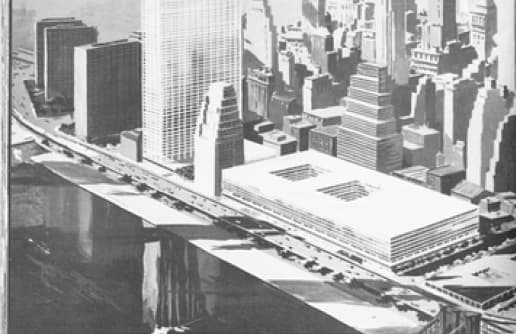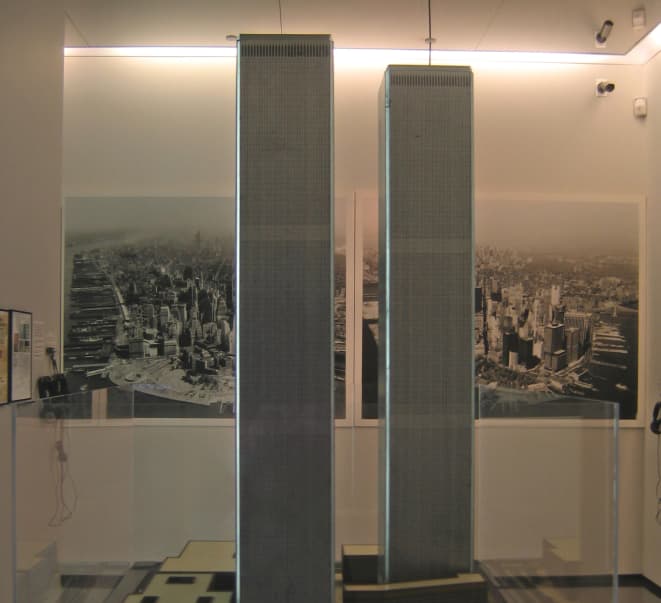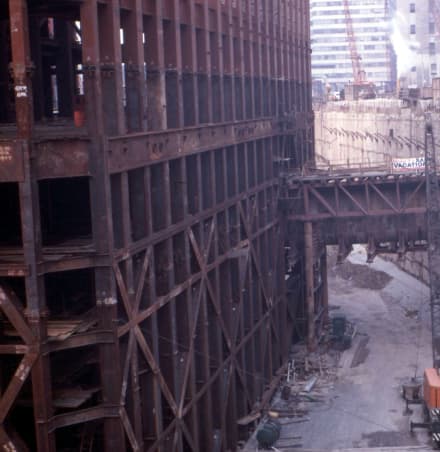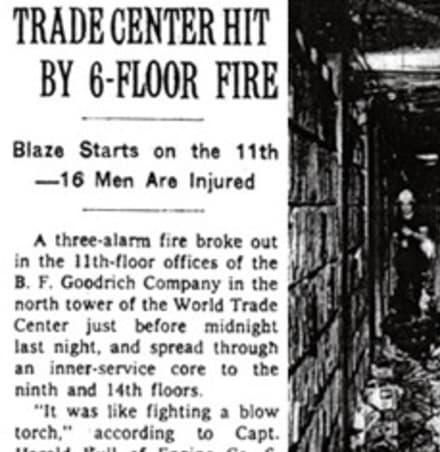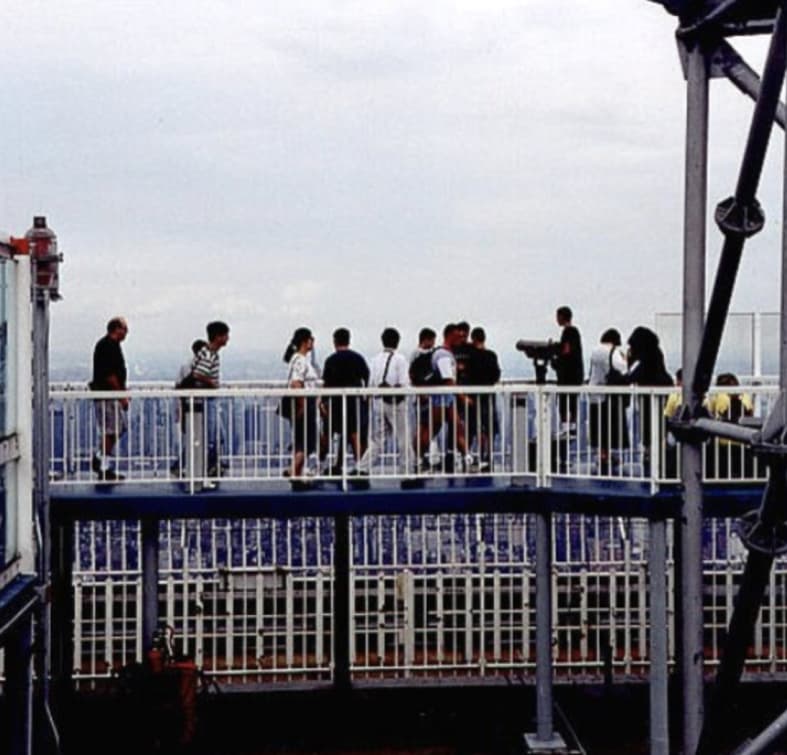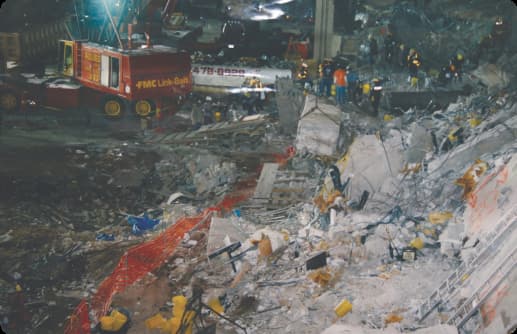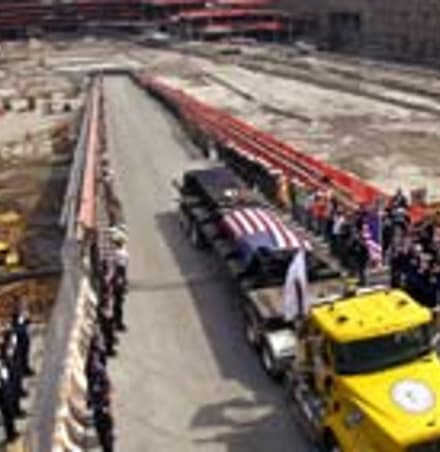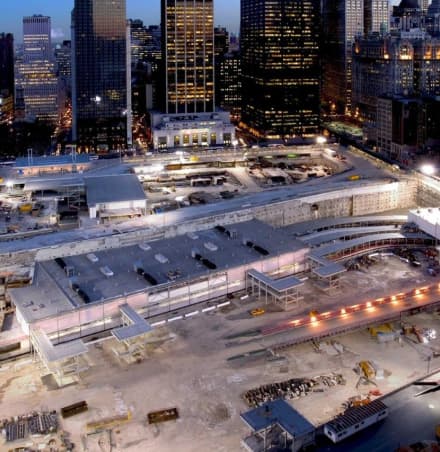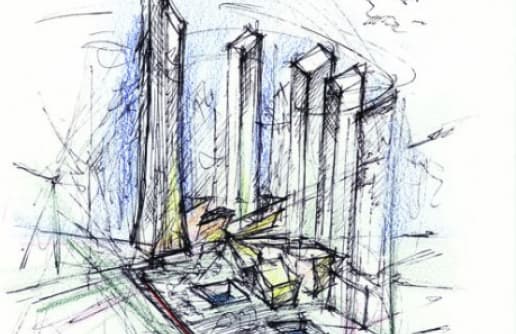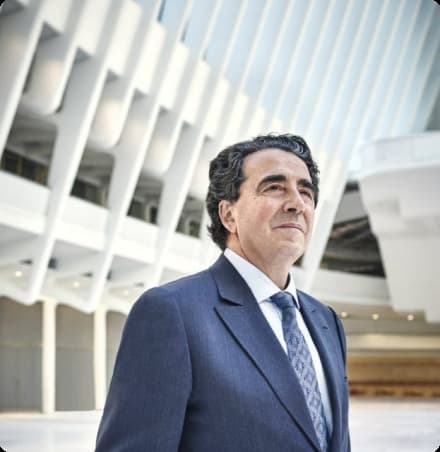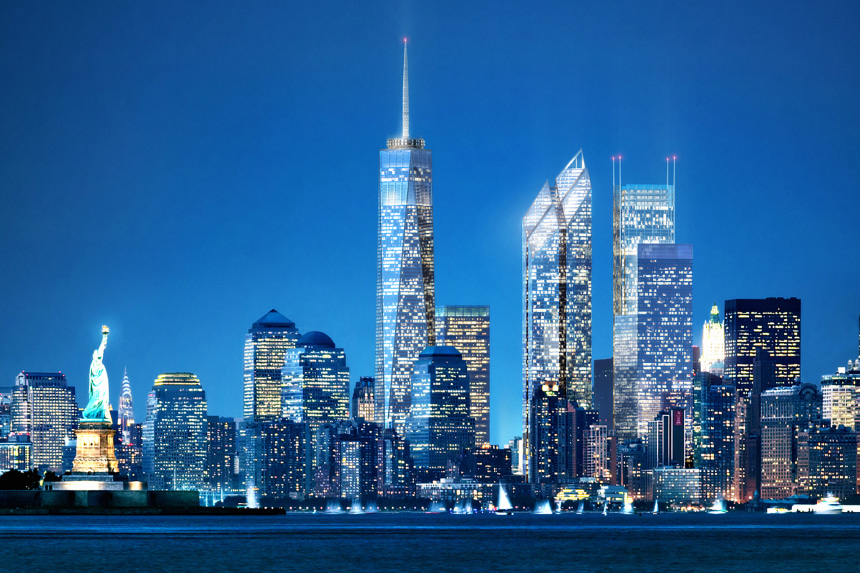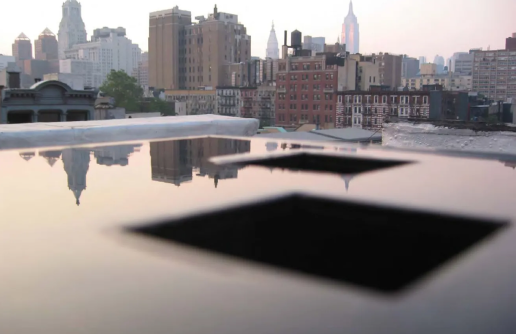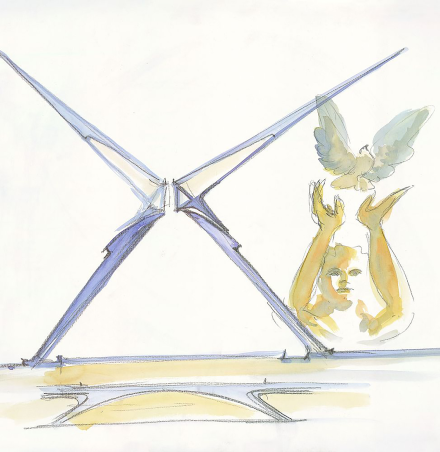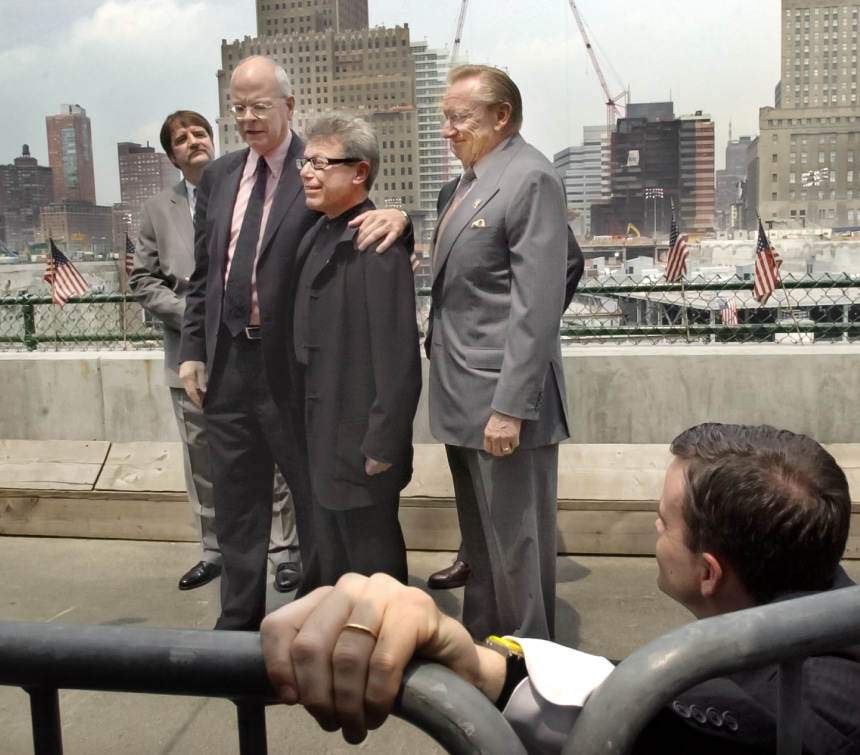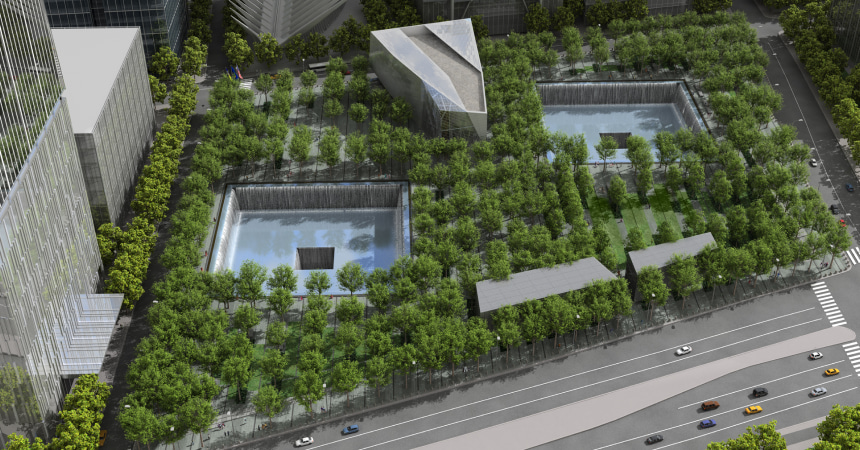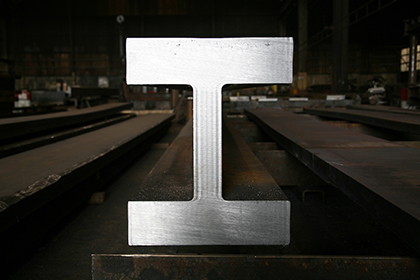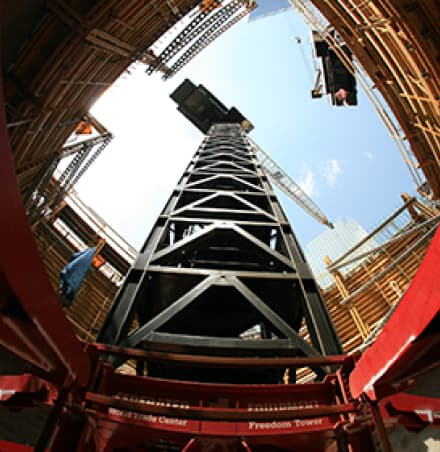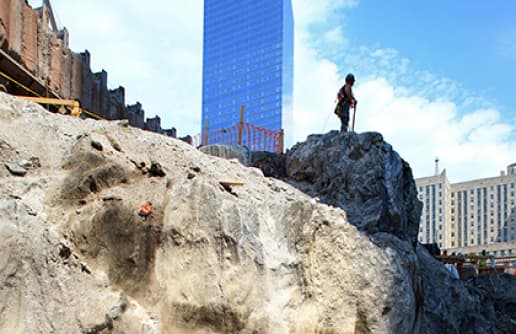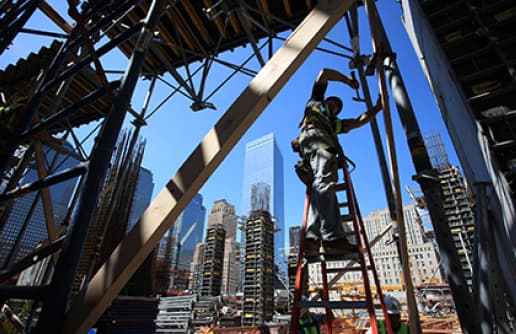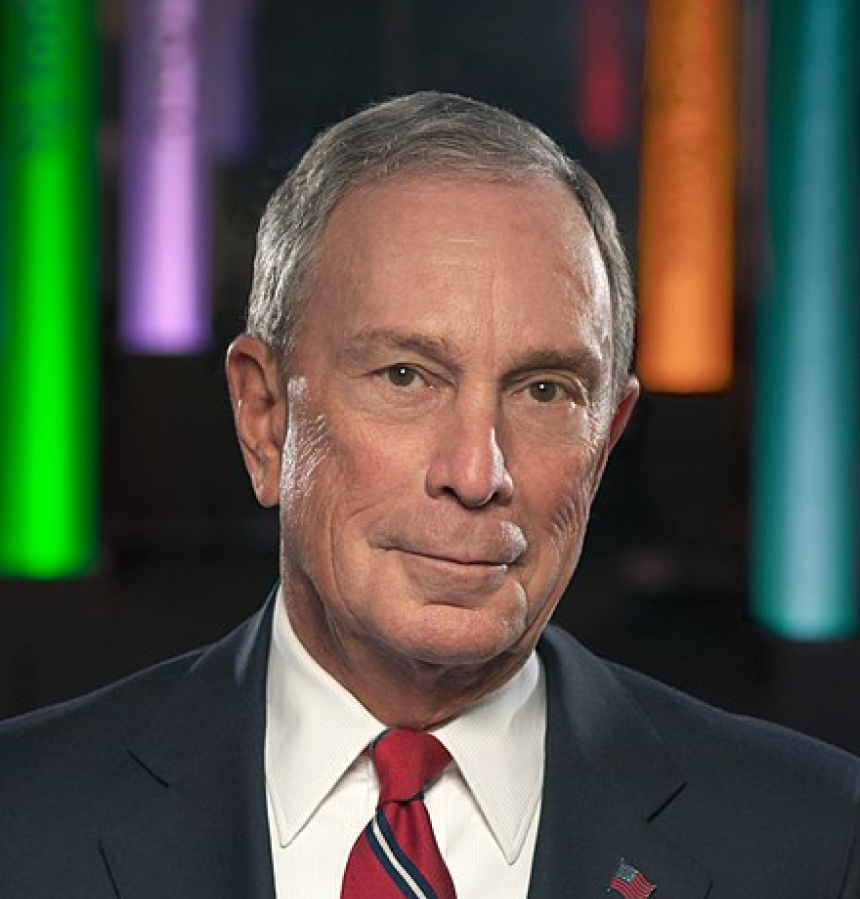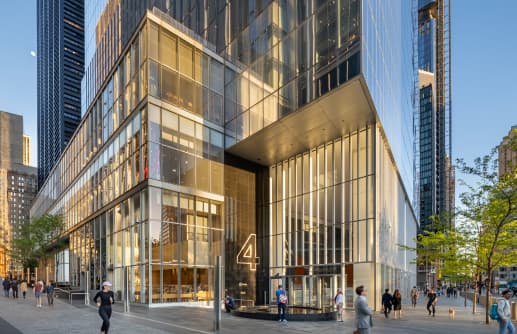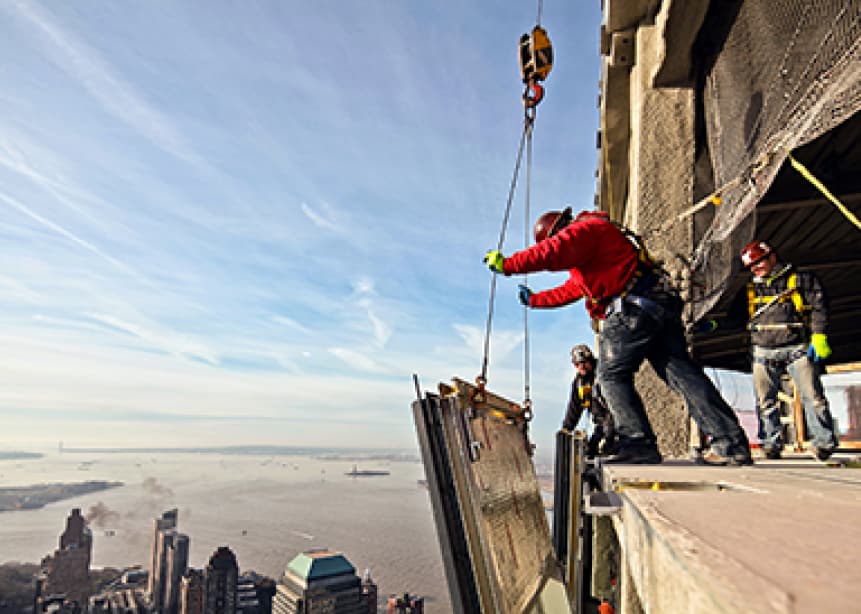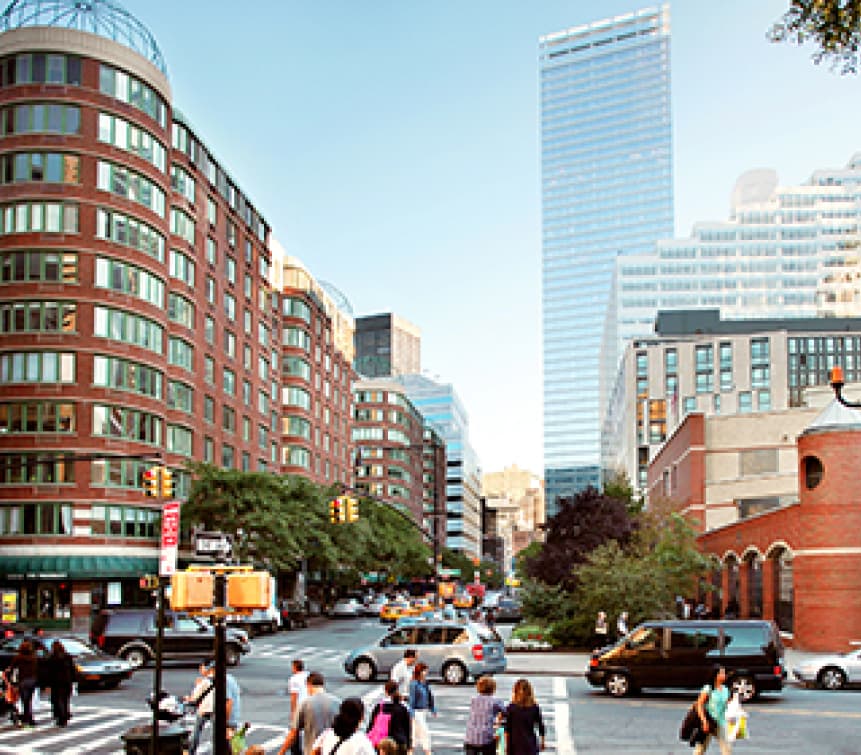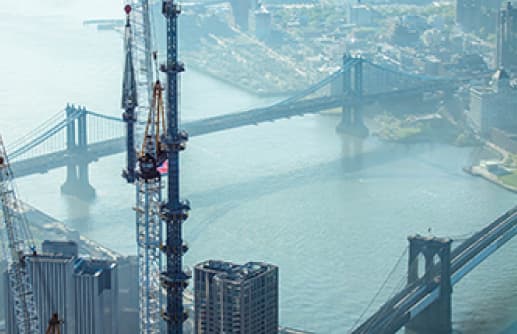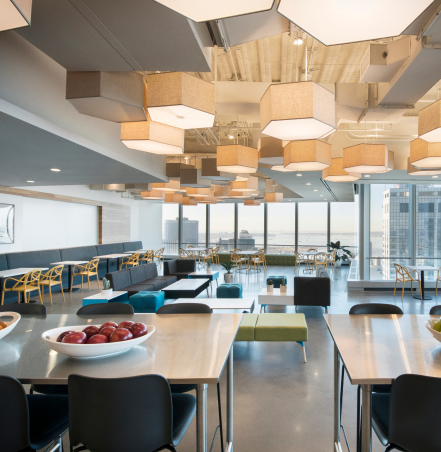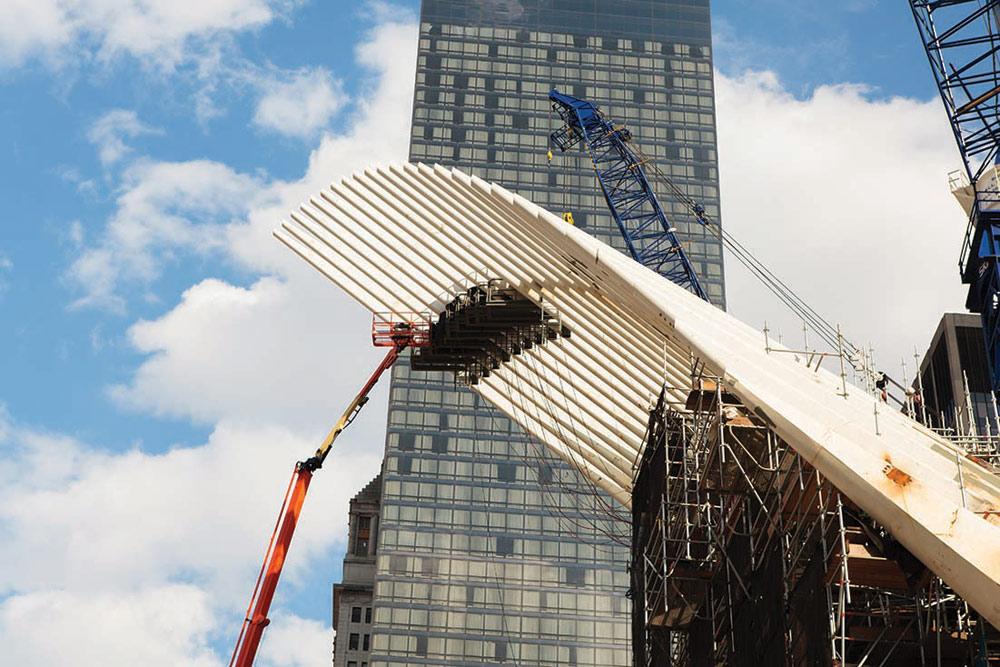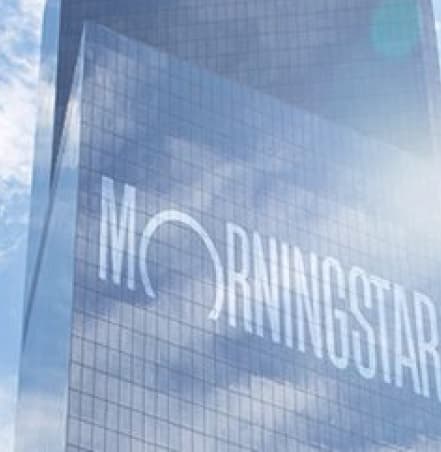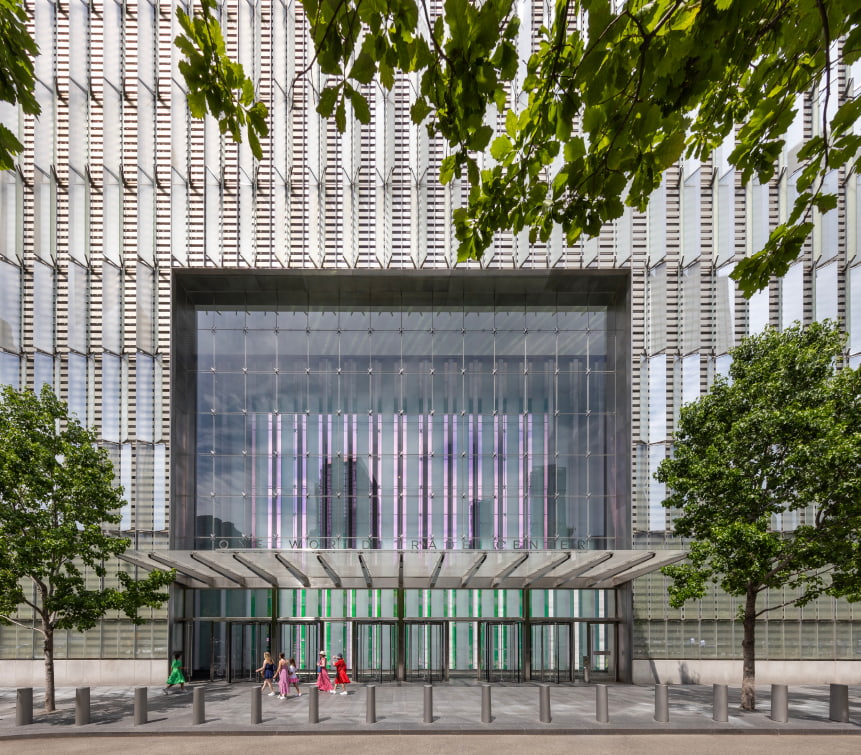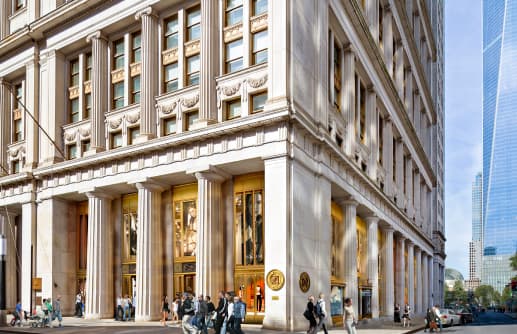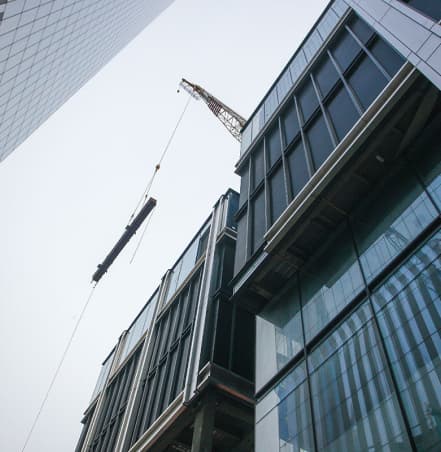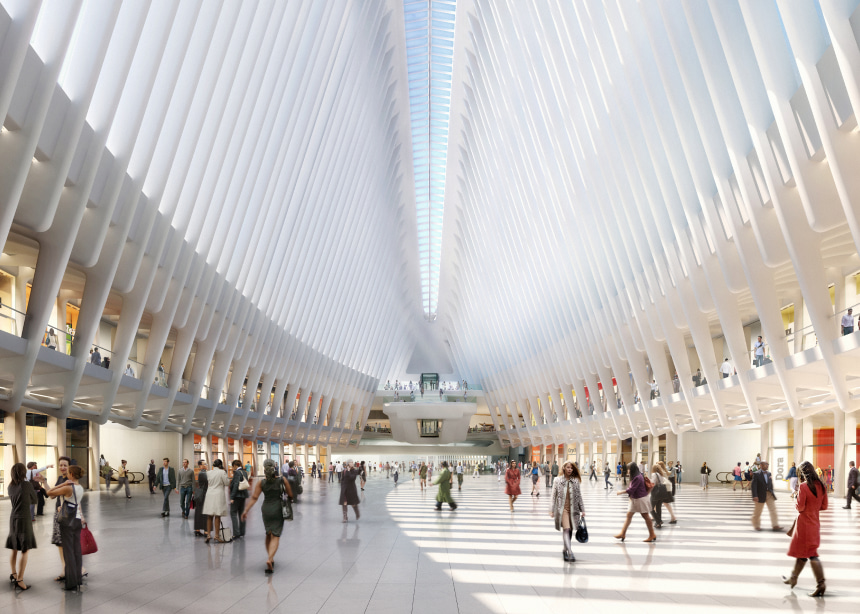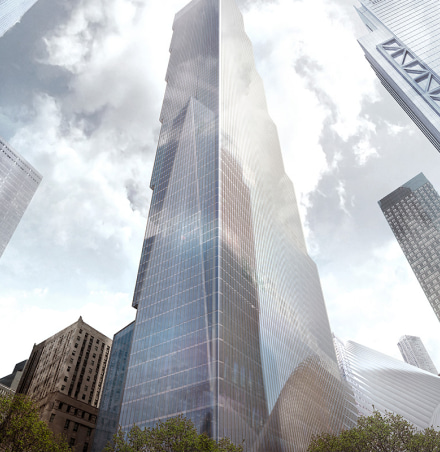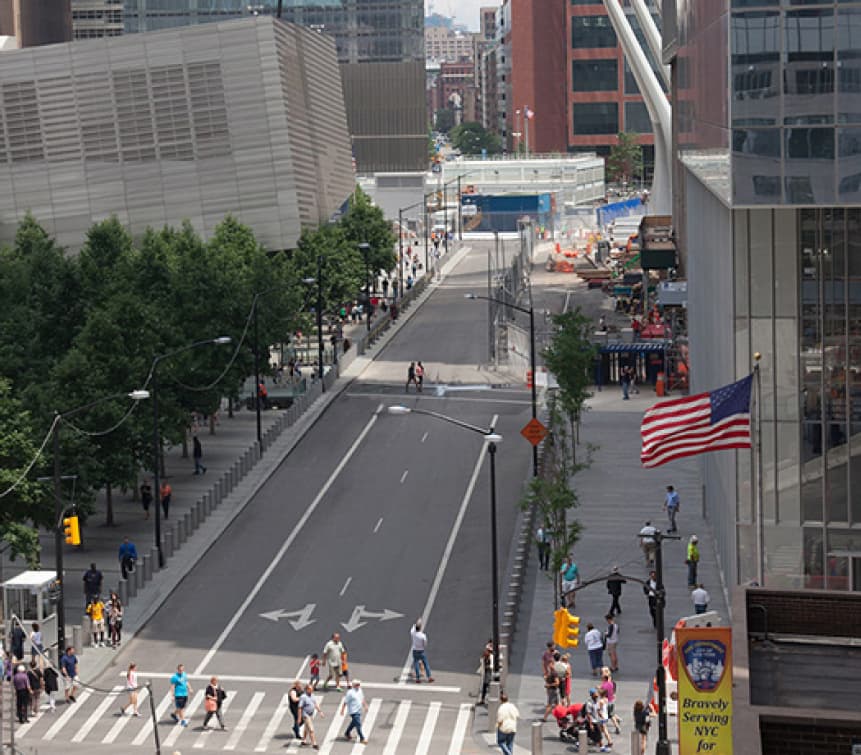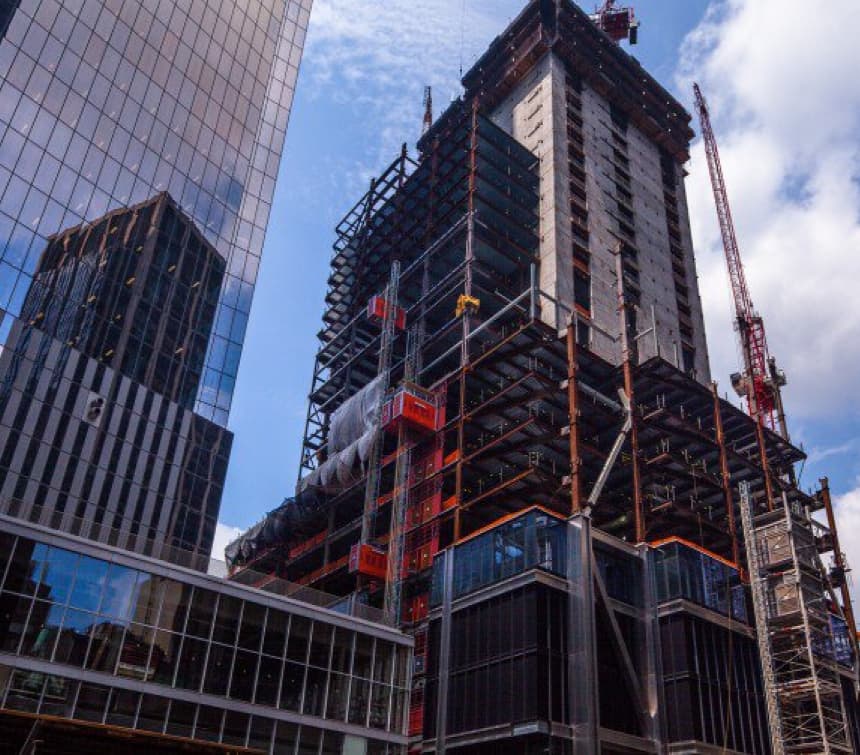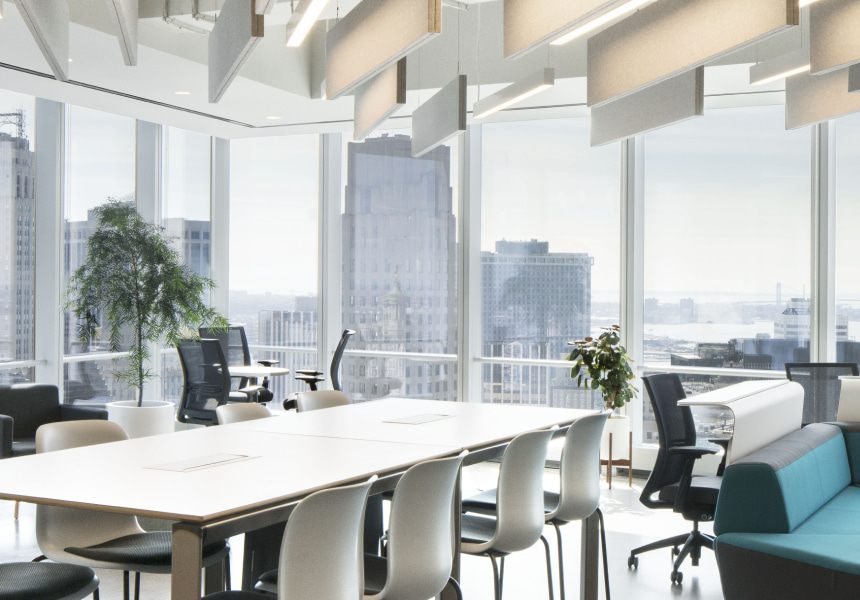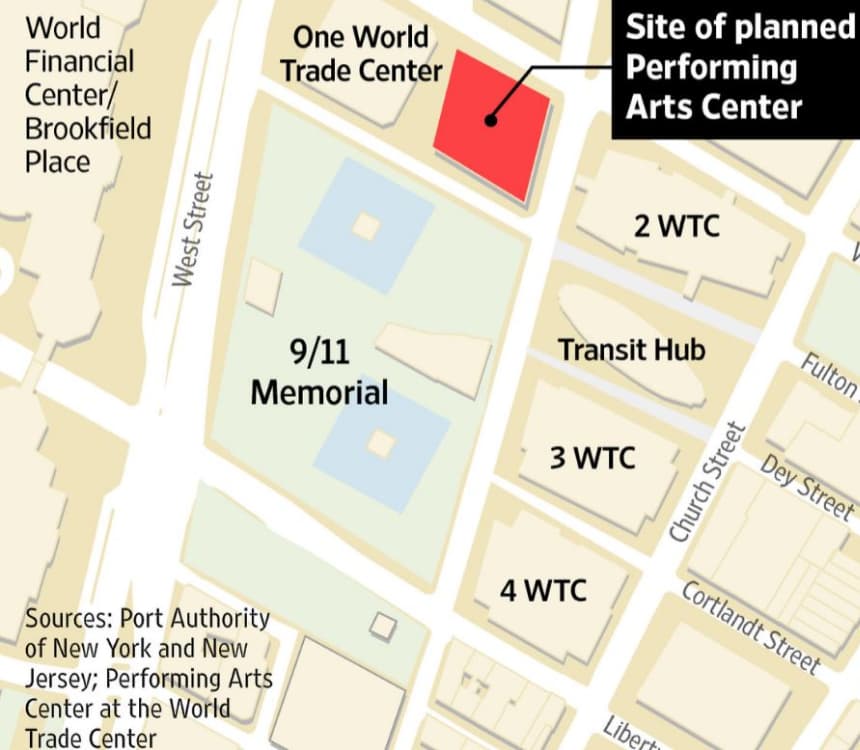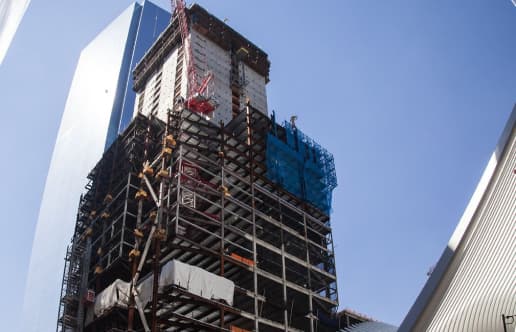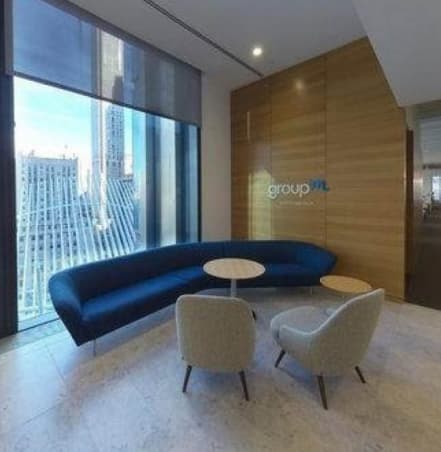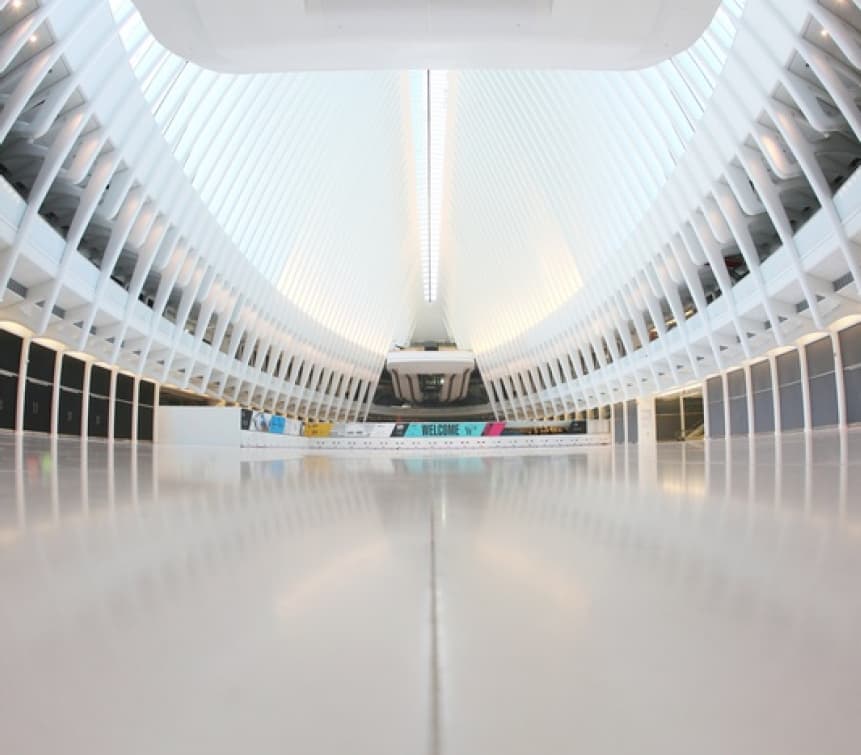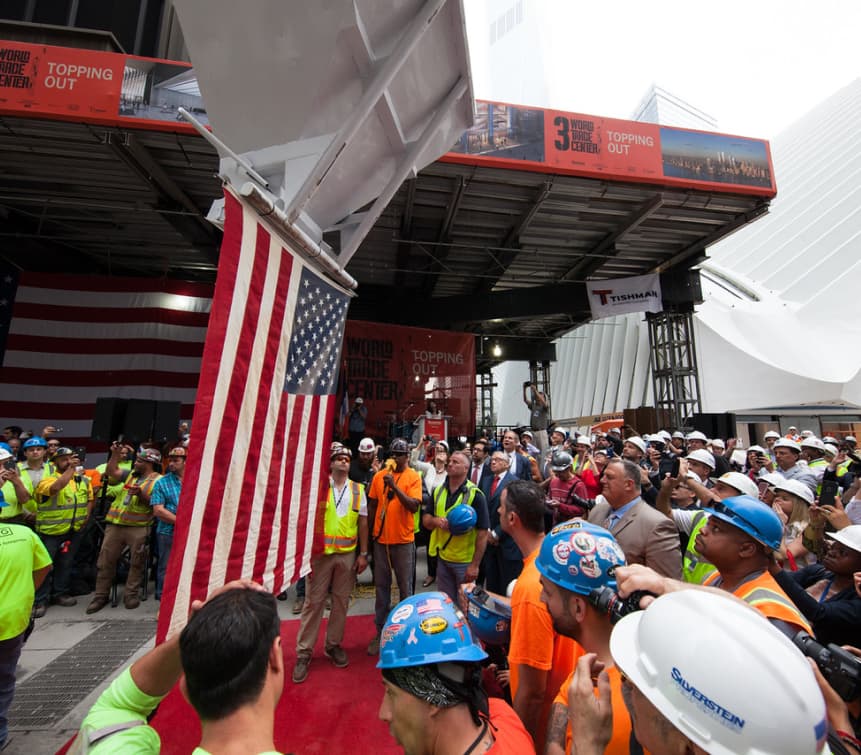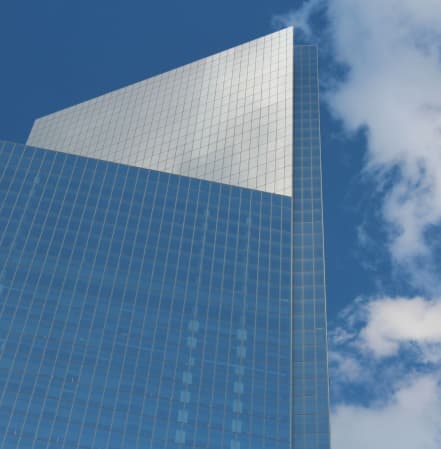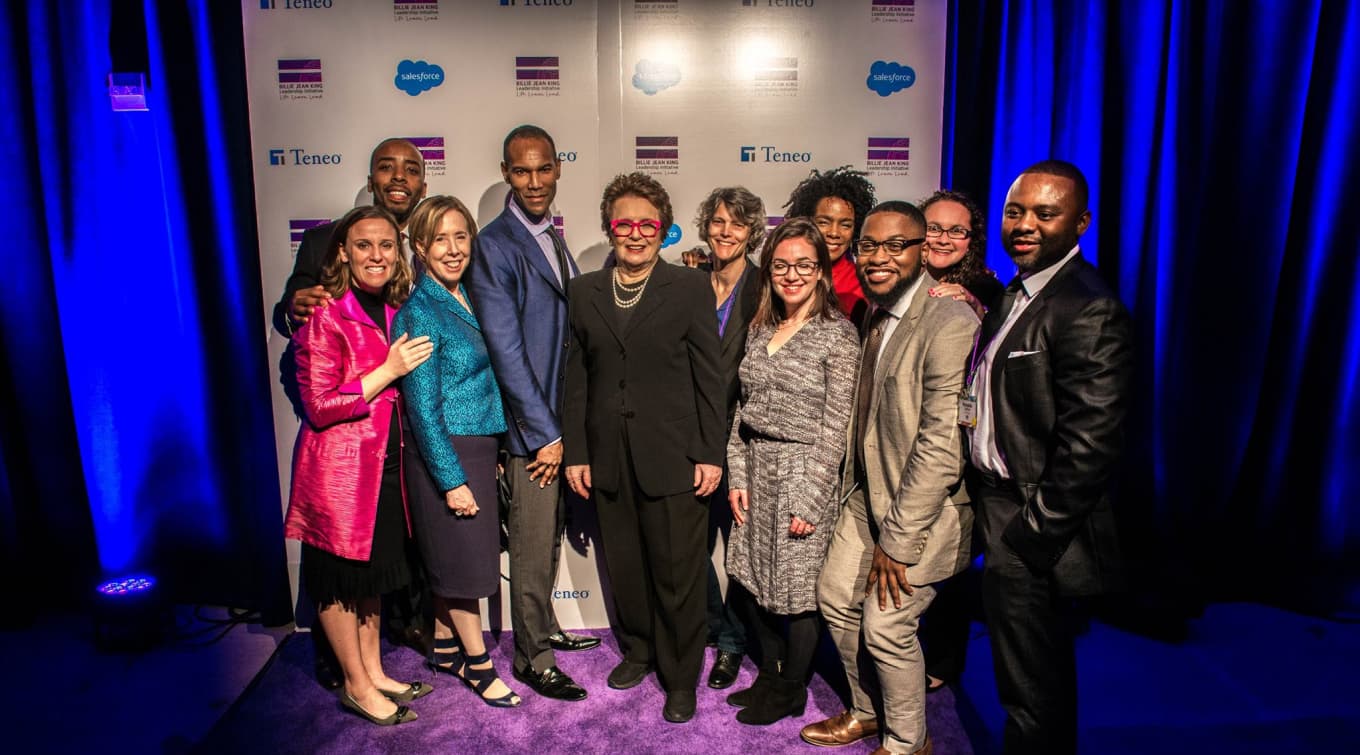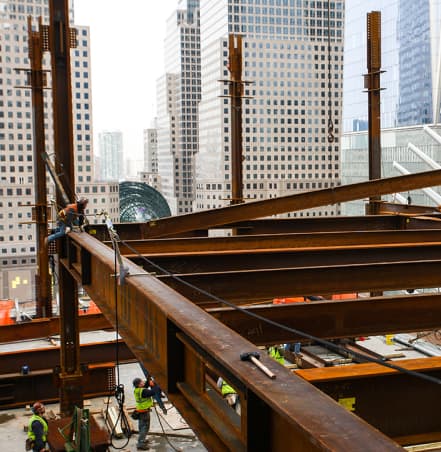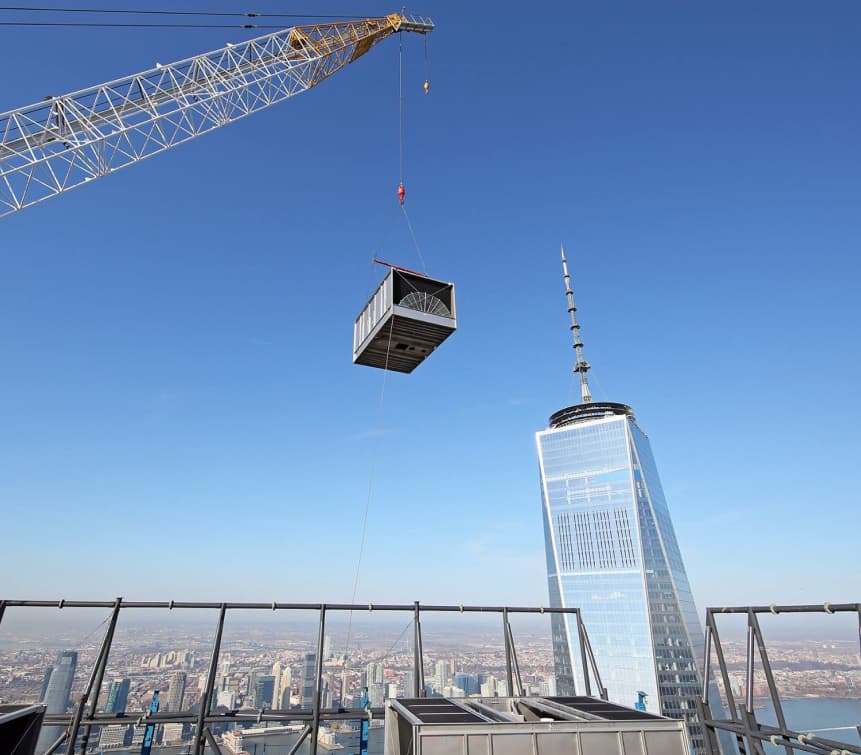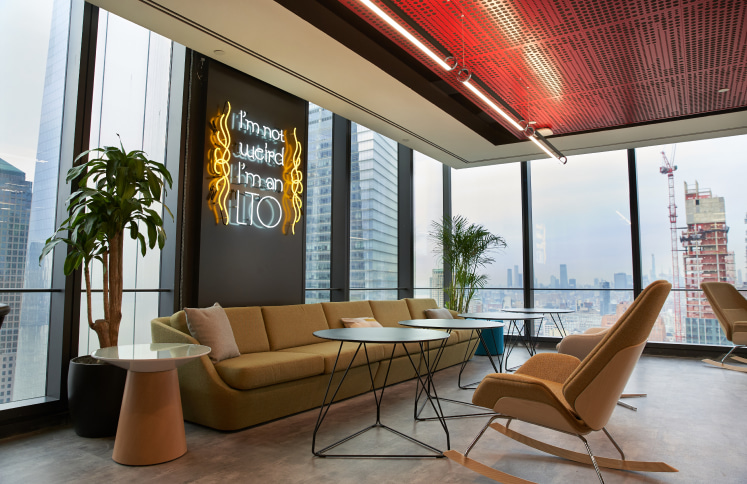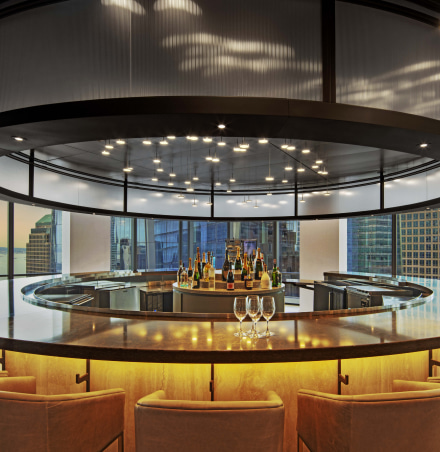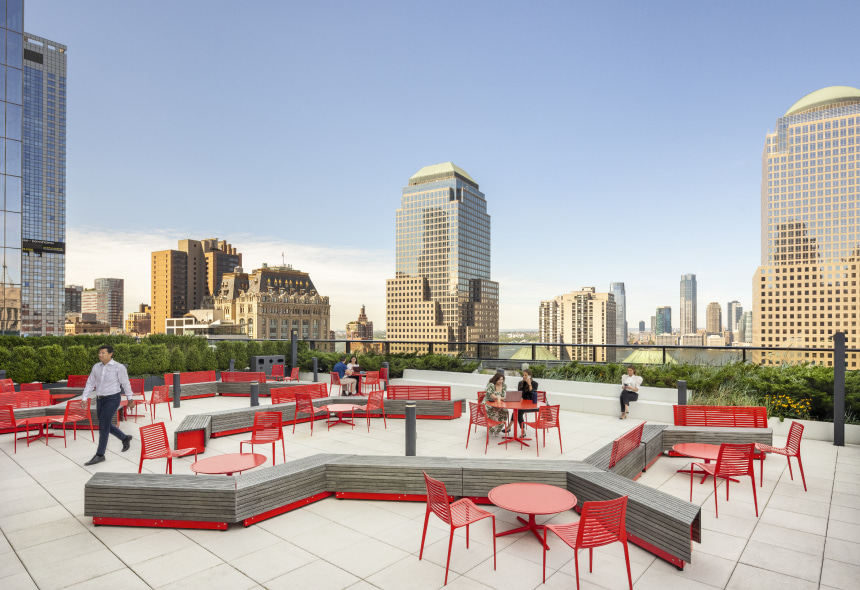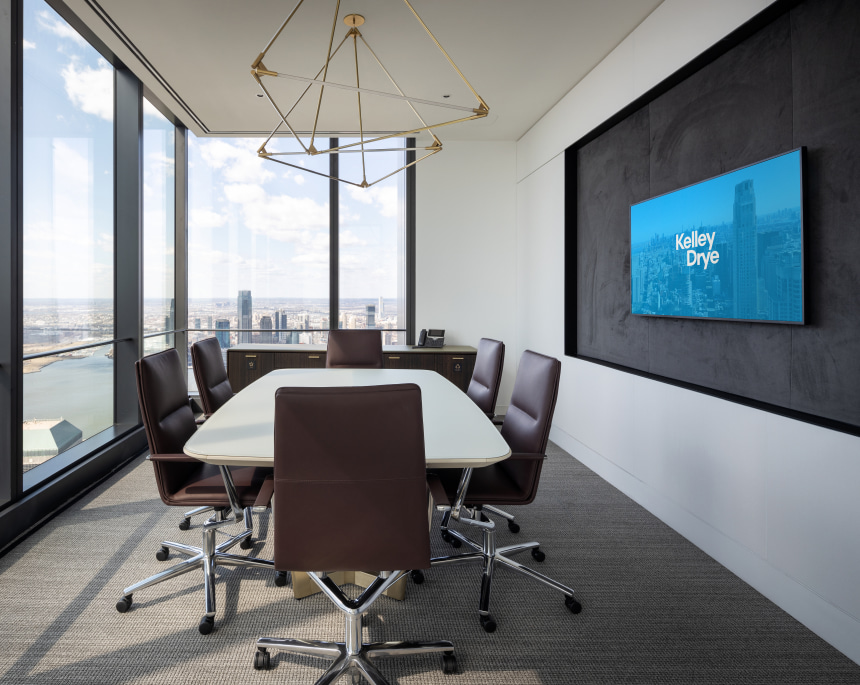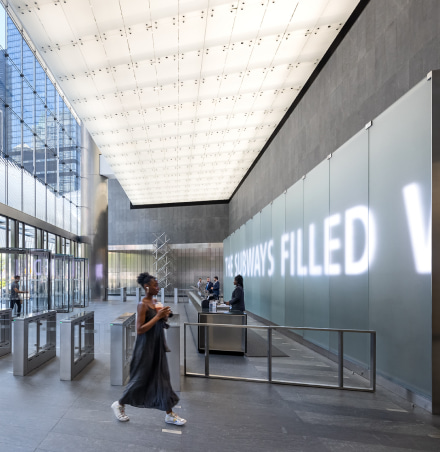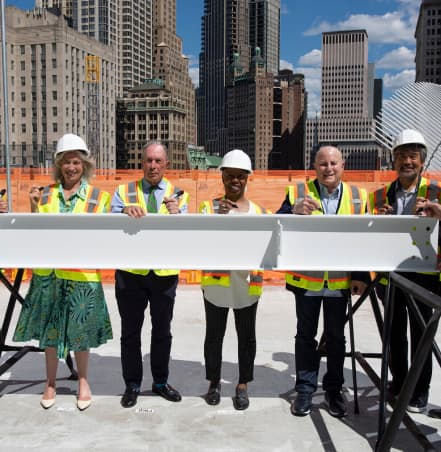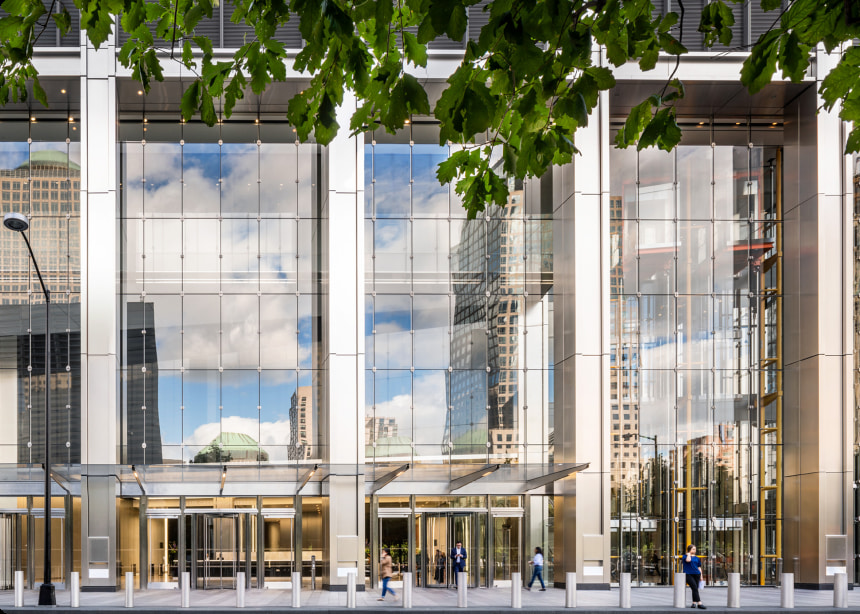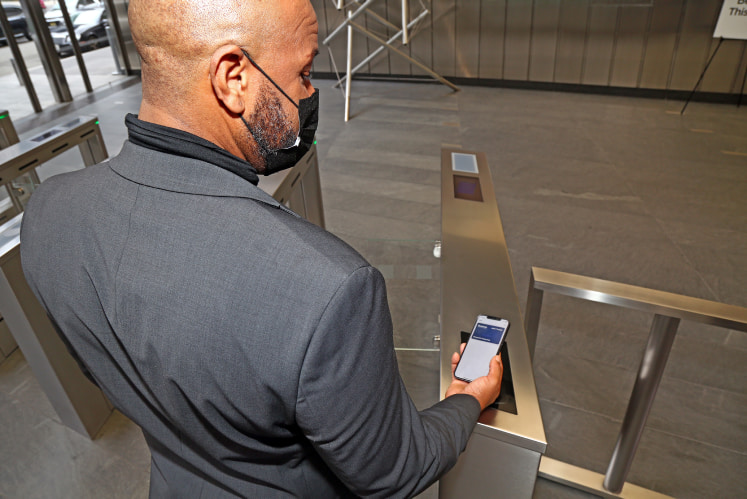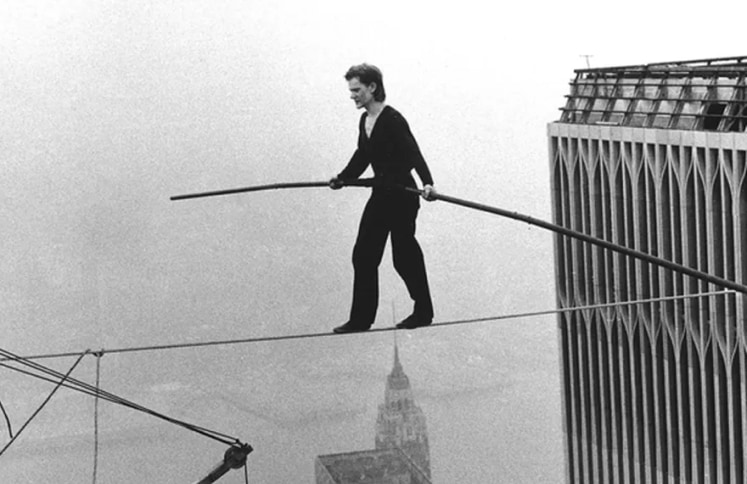40s
In 1946, New York State Legislature created the World Trade Corporation to develop the proposed World Trade Center.
The original proposal was for only one 70-story building in Downtown Manhattan, not the final twin towers design. Winthrop Aldrich, chairman of Chase Bank, was appointed to explore the project’s feasibility. The New York State Legislature passed a bill authorizing Governor Thomas E. Dewey to move forward with development.
50s
The World Trade Corporation nominated one of the nation’s premier architectural firms, Skidmore, Owings, and Merrill (SOM) to develop a plan for a “new Lower Manhattan” in 1958.
SOM proposed a complete rebuilding and expansion of the Financial District and suggested building a World Trade Center. In 1958, Chase Manhattan Bank vice chair David Rockefeller announced plans to build a multi-million-square-foot complex on Lower Manhattan’s east side. The Port Authority of New York and New Jersey (PANYNJ) agreed to oversee the project. Although many questioned the Port Authority’s entry into the real estate market, Austin J. Tobin, Executive Director of the PANYNJ saw the project as a way to enhance the agency’s power and prestige.
Photograph Credit : Link
60s
September 20, 1962: The Port Authority chose the current site for the World Trade Center.
Minoru Yamasaki was selected to design the project. Less than two years and more than 100 design concepts later, the Port Authority unveiled the $525 million World Trade Center plan to the public. It was a composite of six buildings comprised of 10 million square feet of office space. At its core were the Twin Towers, which at 110 stories (1,368 and 1,362 feet) would be the world’s tallest skyscrapers.

Photograph Credit : Aude, CC BY-SA 2.5, via Wikimedia Commons
January 18, 1964
Yamasaki’s design for the World Trade Center was unveiled to the public.
The design consisted of a square plan approximately 207 feet in dimension on each side. The buildings were designed with narrow office windows 18 inches wide, due to Yamasaki’s fear of heights and his desire to make building tenants feel secure. The building facades were covered in aluminium-alloy.
March 1, 1965
The Port Authority of New York and New Jersey began obtaining property at the World Trade Center site.
Photograph Credit : Usrlman, Public domain, via Wikimedia Commons
August 5, 1966
Demolition at the site begins for construction of the World Trade Center.
Demolition at the site began with the clearance of thirteen square blocks of low-rise buildings for construction of the World Trade Center. WTC 1, the North Tower, rose ahead of WTC 2.
February 1967
Tishman Realty and Construction was hired to oversee the construction of the World Trade Center project.
70s
December 23, 1970: the topping out ceremony of the North Tower.
The first tenants moved into the north tower, 1 WTC, although the tower was not fully completed until 1972. 1 WTC featured many innovations masterminded by Yamasaki and his team. Among them were the Twin Towers’ high-speed elevators, sky lobbies, and “hollow tube” building model that distributed weight from the inner core across floor trusses to the exterior’s closely spaced steel columns. The load-bearing exterior also served to brace against wind. Some of the major tenants at 1 WTC included Marsh USA INC, Bank of America, Cantor Fitzgerald Securities, and Brown & Wood LLP.



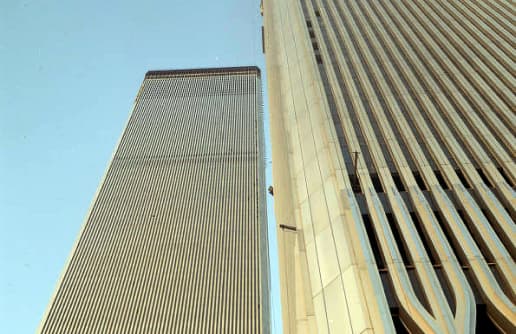
Photograph Credit : Robert Yarnall Richie, Public
domain, via Wikimedia Commons
The topping out ceremony of the South Tower at 1,362 feet.
110
stories each
April 4, 1973
The Twin Towers debuts as the tallest buildings in the world.
The Twin Towers debut as the tallest buildings in the world -at 1,368 and 1,362 feet and 110 stories each– surpassing the height of the Empire State Building until the Sears Tower in Chicago, providing 10 million sq ft of office space was built. The ceremonial opening of the Twin Towers on this date marked seven years of construction, preceded by more than a decade’s worth of planning that transformed 16 acres of Lower Manhattan into an international business hub. In addition to the Twin Towers, four smaller buildings and a hotel, all built nearby around a central landscaped plaza, completed the complex.
The mall at the World Trade Center, which was located immediately below the plaza, was the largest shopping mall in Lower Manhattan. The six basements housed two subway stations and a stop on the PATH trains to New Jersey. Some 50,000 people worked in the buildings, while another 200,000 visited or passed through each day.

August 7, 1974
Philippe Petit completed a high-wire walk between the Twin Towers.
After six years of planning and research, the 24-year-old Petit made a total of eight total crossings between the mostly finished towers, a quarter mile above the sidewalks of Manhattan, in an unexpected event that lasted about 45 minutes. Philippe Petit’s high-wire walk is credited with bringing much needed popular attention and fondness to the Twin Towers.
Photograph Credit : Link
February 13, 1975
A fire broke out in the North Tower.
A fire broke out on the 11th floor of the North Tower. The fire then spread from the 9th to 14th floors by igniting the insulation of telephone cables in a utility shaft that ran between the floors. Most of the damage was concentrated on the 11th floor. Fireproofing protected the steel from melting and there was no structural damage to the tower.
Photograph Credit : Link
December 1975
Top of the World Observation Deck opens at the South Tower.
The Top of the World Observation Deck opens at Two World Trade Center (South Tower) on the 107th floor providing breathtaking views of Manhattan. On a clear day, visitors could see up to 50 miles in any direction.
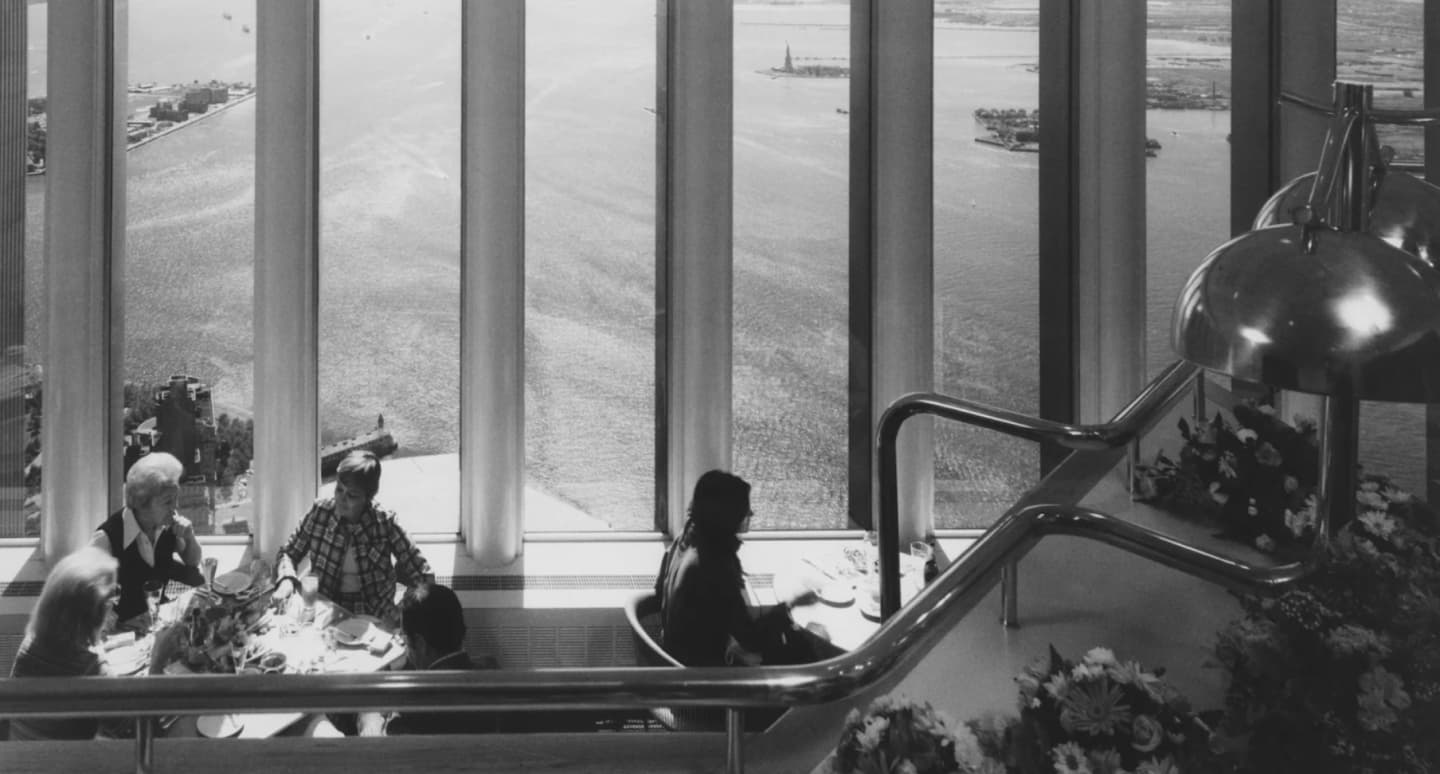
Photograph Credit : Bettmann/Getty Images
1976
Windows on the World, complex of dining, meeting, and entertainment venues, opened on the top floors (106th and 107th) of the North Tower.
Developed by Joe Baum and initially designed by Warren Platner, it occupied 50,000 square feet of space and offered breathtaking views of Manhattan.
In its last year of operation (2000), Windows on the World reported its revenue as $37 million, making it the highest-grossing restaurant in the United States.
$37M
Revenue in 2000
1980s
Developed by Silverstein Properties, the 47-story Seven World Trade Center was completed.
The 610-foot Seven WTC was designed by Emery Roth & Sons with a red granite façade and a trapezoidal footprint. To supply power to the 10048 zip code, which was dedicated solely to the WTC site, Con Edison built an electrical substation located below Seven WTC in 1967. Tishman Realty & Construction managed construction of the building, which began in 1983. Some of the major tenants at Seven WTC were Salomon Smith Barney, American Express Bank International, ITT Hartford Insurance Group and Standard Chartered Bank.



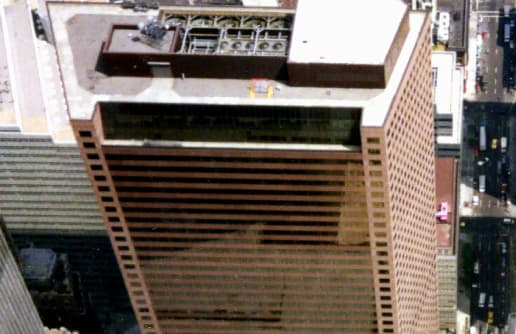
Photograph Credit : User:Fanghong, Public domain, via Wikimedia Commons
1990s
A van loaded with 1,500 pounds of explosives was planted by a group of terrorists in an underground parking garage of the north tower.
Their goal was to knock the North Tower into the South Tower, bringing both towers down and killing thousands of people. The attack killed six people, including a pregnant woman, injured more than 1,000 people and created a five-story hole beneath the towers, resulting in hundreds of millions of dollars of damage.
Photograph Credit : Federal Bureau of Investigation, Public domain, via Wikimedia Commons
2000
On July 24, Larry Silverstein holds the keys to the World Trade Center.
Larry Silverstein completed the largest real estate transaction in New York history by acquiring the World Trade Center for $3.2 billion, only to see it destroyed six weeks later in the terrorist attacks on 9/11. Previously, the World Trade Center site was under the control of the Port Authority of New York & New Jersey. In this picture Larry Silverstein is joined by his children, Roger Silverstein and Lisa Silverstein, his wife, Klara Silverstein, and his attorney, Leonard Boxer.
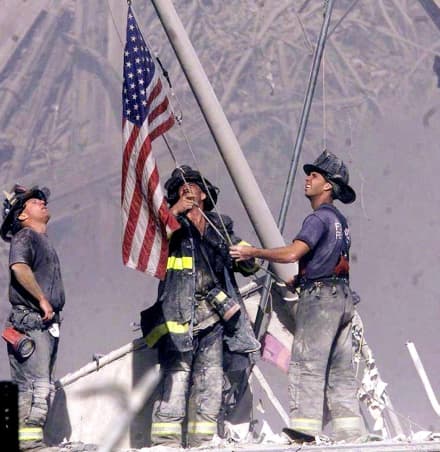
Photograph Credit : Thomas Franklin / The Record
September 11, 2001
The World Trade Center was destroyed in the September 11th terrorist attacks.
$10B
federal funding
November 2001
The Lower Manhattan Development Corporation was created
The Lower Manhattan Development Corporation (LMDC) was created in the aftermath of September 11th by then-Governor George Pataki and then-Mayor Rudy Giuliani to plan the reconstruction of Lower Manhattan and distribute nearly $10 billion in federal funds aimed toward rebuilding and revitalizing Lower Manhattan. The LMDC sponsored the international design competition for the World Trade Center Memorial. LMDC works in coordination with public and private sectors to coordinate long-term planning for the World Trade Center site and the adjacent downtown communities.

2002
Beyer Blinder Belle and Parsons Brinkerhoff selected to develop a master plan for the reconstruction and transportation planning.
On May 22, 2002, the LMDC selected chosen engineering partners for the WTC site. Beyer Blinder Belle is best known for its restoration of Grand Central Terminal while Parsons Brinkerhoff is one of the oldest U.S. private engineering firms involved in energy, environment and facilities engineering.
May 30, 2002
The WTC recovery operation came to a ceremonial end, marking the completion of the removal of more than 1 million tons of concrete and steel.
Photograph Credit : Link
May 2002
A report was released on the collapse of Seven WTC.
The WTC recovery operation came to a ceremonial end, marking the completion of the removal of more than 1 million tons of concrete and steel.The Federal Emergency Management issued a report on the collapse of Seven WTC on 9/11 based on a preliminary investigation conducted with the Structural Institute of the American Society of Civil Engineers confirming that the collapse was caused by fires on multiple stories ignited by debris from the other towers. These fires had continued due to lack of water for sprinklers or firefighting.
July 2002
The 1st round of the design competition for the reconstruction of the World Trade Center.
The 1st round of the design competition for the reconstruction of the World Trade Center site took place, known as the “Preliminary Design Contest”. However, the designs submitted were criticized as being too boring and placing too much emphasis on office space. This round of the design competition sparked debate about the future of the World Trade Center site.
Photograph Credit : The Port Authority of NY & NJ
August 2002
The first steel column was also erected at the WTC site for the temporary PATH station.
New York Governor George Pataki and New Jersey Governor James McGreevey created a World Trade Center site viewing fence with heroes’ names and other information panels for visitors. The first steel column was also erected at the WTC site for the temporary PATH station.
November 20, 2002
The plans for the first major rebuilding project were announced by Larry Silverstein for 7 World Trade Center, a 52-story steel and glass skyscraper.
Among its many building enhancements, 7 WTC included a reinforced concrete core and a steel superstructure. Safety systems exceeded New York City building code and are expected to form the model for future high-rise building codes. Construction on 7 WTC began soon after in 2002
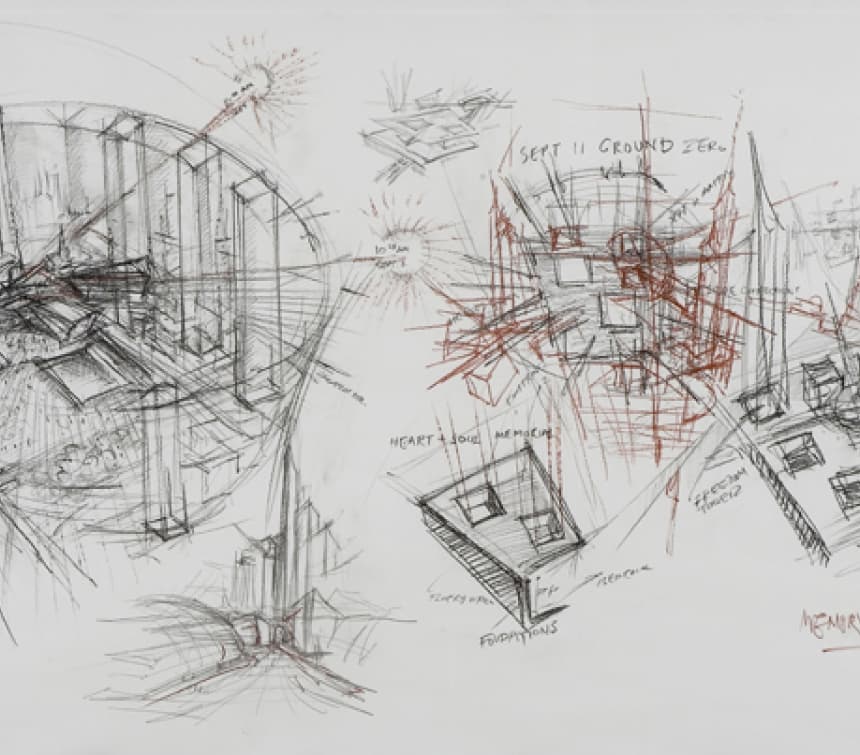
Photograph Credit : Link, ©Studio Libeskind
December 2002
The 2nd round of competition for the design contest, known as the “Innovative Design Contest” included Daniel Libeskind’s scheme as a submittal.
There were 2,000 entries in total. The seven semi-finalists of this round of competition presented their designs at the Winter Garden of the World Financial Center.
2003
Design by Daniel Libeskind of Berlin, Germany chosen to replace the 16-acre WTC site.
Libeskind’s design was judged based on 12 points of criteria including price, public response, vision, connectivity, public space, and how the victims of the September 11th attacks would be memorialized. 1 World Trade Center is already the most famous element of architect Daniel Libeskind’s WTC Master Plan. Libeskind’s plan proposed a descending spiral of towers beginning at the site’s northwest corner and ending at the National 9/11 Memorial and Museum, where the Twin Towers’ footprints will be memorialized.
April 1, 2003
The Lower Manhattan Development Corporation announced the start of an international design competition for the WTC Memorial Site to commemorate those lost on September 11th and the 1993 bombings of the World Trade Center.
July 2003
Spanish architect Santiago Calatrava was selected to design the WTC Transportation Hub.
Santiago Calatrava was selected by the Port Authority of New York and New Jersey. Calatrava is best known for his designs of public buildings and bridges. Some of his more recent work includes the Sundial at Turtle Bay in Redding, California, the James Joyce in Dublin, and the Olympic sports complex in Athens.
July 2003
Architect David Childs of Skidmore, Ownings & Merrill was selected to design 1 World Trade Center.
Architect David Childs of Skidmore, Ownings & Merrill was selected to design 1 World Trade Center, planned to be the tallest of the five new WTC office towers. Mr. Childs is a graduate of Yale College and the Yale School of Art and Architecture. He joined the Washington, DC office of Skidmore, Owings & Merrill in 1971 after having served as the design director of the Pennsylvania Avenue Commission. David Childs then relocated to SOM’s New York office where he worked on the New York Mercantile Exchange, the arrivals building at JFK, and Worldwide Plaza, among others. Differences of opinion quickly arose between Libeskind and Childs regarding their visions for the site’s final result.
Photograph Credit : Link
November 23, 2003
A temporary PATH station opened.
The station featured a canopy entrance along Church Street and a 118-by-12-foot mosaic mural, “Iridescent Lightning,” by Giulio Candussio. The station was also ornamented with opaque panel walls inscribed with inspirational quotes attesting to the resilience of New York City. The panels partially shielded the WTC site from view. Since reopening after 9/11, the station has reclaimed its status as the busiest station in the PATH system.
December 19, 2003
1 WTC plans were unveiled to the public.
The shimmering skyscraper of glass, steel, and cable would stand at 1,776 feet, invoking the symbolism of the building. The building was designed to sit at the northwest corner of the site. The design also called for 70 commercial stories with 2.6 million square feet of office space, plus an underground regional transportation hub, garages, and several shopping centers. A public observation deck and a rebuilt Windows on the World, the restaurant that once sat atop the north tower was also in the plan. The previous World Trade Center buildings each had 110 stories, but 1 World Trade Center will rise higher because of a large glass structure and 276-foot spire topping off the building.
2004
Michael Arad and Peter Walker were selected as the designers of the Memorial ‘Reflecting Absence’.
Michael Arad and Peter Walker were selected as the designers of the Memorial ‘Reflecting Absence’, honoring those lost in the terrorist attacks of September 11, 2001 and February 26, 1993. Over five thousand submissions were received and the World Trade Center Memorial Competition, launched by the LMDC, became the largest design competition in history.
Photograph Credit : Link, The Hutchinson News
January 21, 2004
Santiago Calatrava presented the design for the WTC Transportation Hub at the Winter Garden.
The design evokes the image of a bird in flight and incorporates steel, glass, and light. To bring an even greater sense of open air and natural light to the station’s concourse, mezzanine, and platform levels, Calatrava designed the hub’s ceiling to retract-an innovative concept used mostly in sports arenas. Each level inside the station was designed to be column-free to create an open, bright space. Through this Transportation Hub, pedestrians will have access to Hudson River ferry terminals, PATH trains, 13 subway lines, and possibly a direct rail link to JFK International Airport. The Hub will be positioned at the northeast corner of the WTC site at Church and Vessey Streets and is expected to form an underground connection between the World Financial Center and the Metropolitan Transportation Authority’s Fulton Street Transit Center.
May 3, 2004
Richard Rogers and Fumihiko Maki chosen to design World Trade Center towers.
Just days after construction began on 1 World Trade Center, Larry Silverstein announced that architects Richard Rogers and Fumihiko Maki would each design high-rise office towers at the World Trade Center site. Rogers Stirk Harbour + Partnership (RSHP) designed Tower 3 and Fumihiko Maki designed Tower 4.
These architects joined an impressive roster of architectural stars working at the site including site master planner Daniel Libeskind; David Childs of SOM designing the Freedom Tower; Santiago Calatrava, the architect for the transit hub; Michael Arad, who with Peter Walker, is responsible for the World Trade Center Memorial and Museum, and Lord Norman Foster for Tower 2. Following the announcement, Silverstein Properties set up a WTC design studio at 7 World Trade Center with architects, engineers, and consultants working together in an unprecedented collaborative spirit on designs for Towers 2, 3 and 4.
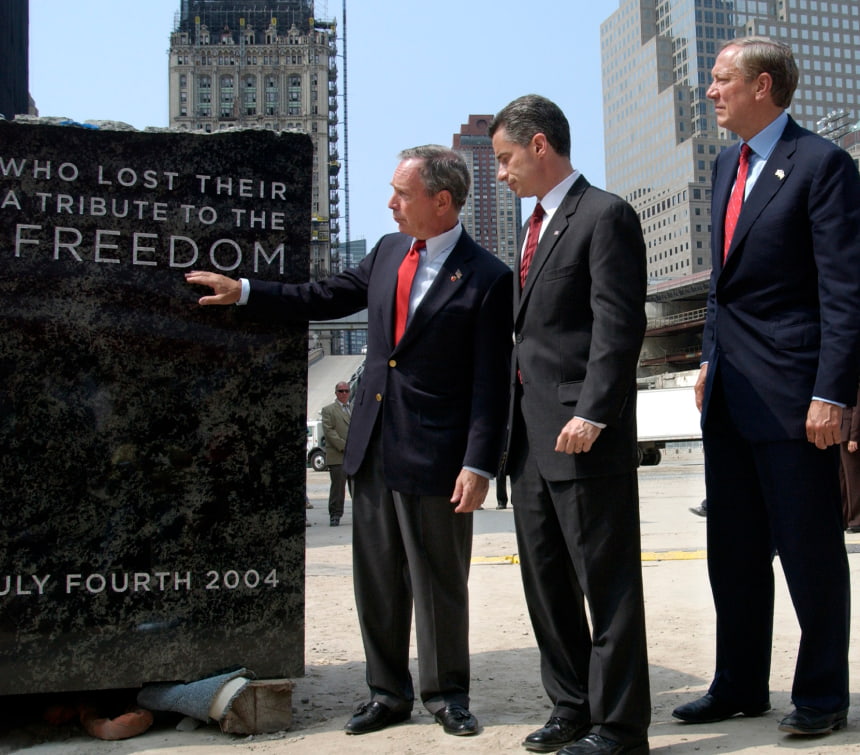
July 4, 2004
Honoring the “Enduring spirit of freedom”, Mayor Bloomberg laid the cornerstone of the Freedom Tower.
Honoring the “Enduring spirit of freedom”, Mayor Bloomberg laid the cornerstone of the Freedom Tower, a 20-ton piece of granite inscribed with those words. The ceremony also included remarks from Governor McGreevey, musical performances by the Young People’s Chorus of New York City, Metropolitan Opera singer Morris Robinson, and a reading from the Declaration of Independence by the 12-year-old son a Port Authority police officer killed on 9/11.
October 21, 2004
7 WTC- Raising of the Final Steel Beam.
7 WTC topped out on October 21, 2004, ironworkers and city officials gathered in front of the building to celebrate the raising of the final steel beam.
December 2004
The final design of the WTC Memorial and museum was unveiled by Arad and Walker.
The final design of the WTC Memorial and museum was unveiled by Arad and Walker. The design included two large “voids”-cascading reflecting pools thirty feet into the footprints of the Twin Towers. The design allowed visitors to follow ramps angled down the side of each footprint to an underground chamber that allows views. Names of all the victims, including rescuers and those who died in the 1993 Trade Center bombing are inscribed on a wall between the chamber and the pool. Extensive landscaping in the plaza featuring 400 swamp white oak and sweet gum trees will create a canopy over the plaza in the warmer months.
2005
On June 29th, the 1 World Trade Center was redesigned due to security concerns.
One World Trade Center was redesigned due to security concerns by the NYPD and then-Governor George Pataki. Details such as the 1,776 height and the 276-foot spire remained the same. To comply with safety concerns, One World Trade Center would have no occupied space other than the lobby. It was also redesigned to be set back farther from West Street, a heavily trafficked highway. Many of the windows were planned to be tempered, laminated and multilayered for extra protection against explosions. The newly designed base has a smaller footprint and planned to be more of a square than a parallelogram.
September 6, 2005
Construction on the World Trade Center Transportation Hub began.
Designed by Santiago Calatrava, the PATH was intended to accommodate 250,000 pedestrians per day. One of the innovative features of the design is that natural light will reach 60 feet below street level.
December 15, 2005
Silverstein Properties announced Lord Norman Foster to design Tower 2 at the World Trade Center.
2006
In March, workers began to remove remaining debris and started surveying work at the World Trade Center. This marked the start of construction on the National September 11 Memorial & Museum.
Photograph Credit : Amy Dreher
April 2006
The Port Authority of New York and New Jersey and Larry Silverstein reached an agreement in which Silverstein relinquished rights to develop the Freedom Tower and Tower 5 in exchange for financing with Liberty Bonds for Towers 2, 3, and 4.
April 2006
Adamson Associates selected as the Executive Architect.
Adamson Associates of Toronto was selected as the Executive Architect to lead a team of architects that included Foster & Partners, Rogers Stirk Harbour + Partnership (RSHP) and Maki and Associates.
April 27, 2006
Construction began on One World Trade Center.
Construction began on One World Trade Center, the symbolic skyscraper designed to replace the destroyed World Trade Center. The tower pays homage to the original Twin Towers, and will rise to 1,776 feet with its illuminated antenna.
May 23, 2006
7 World Trade Center Opens.
On May 23, 2006, Larry Silverstein opened 7 World Trade Center, a 52-story, $700 million project, that became New York City’s first LEED-certified “green” office building.
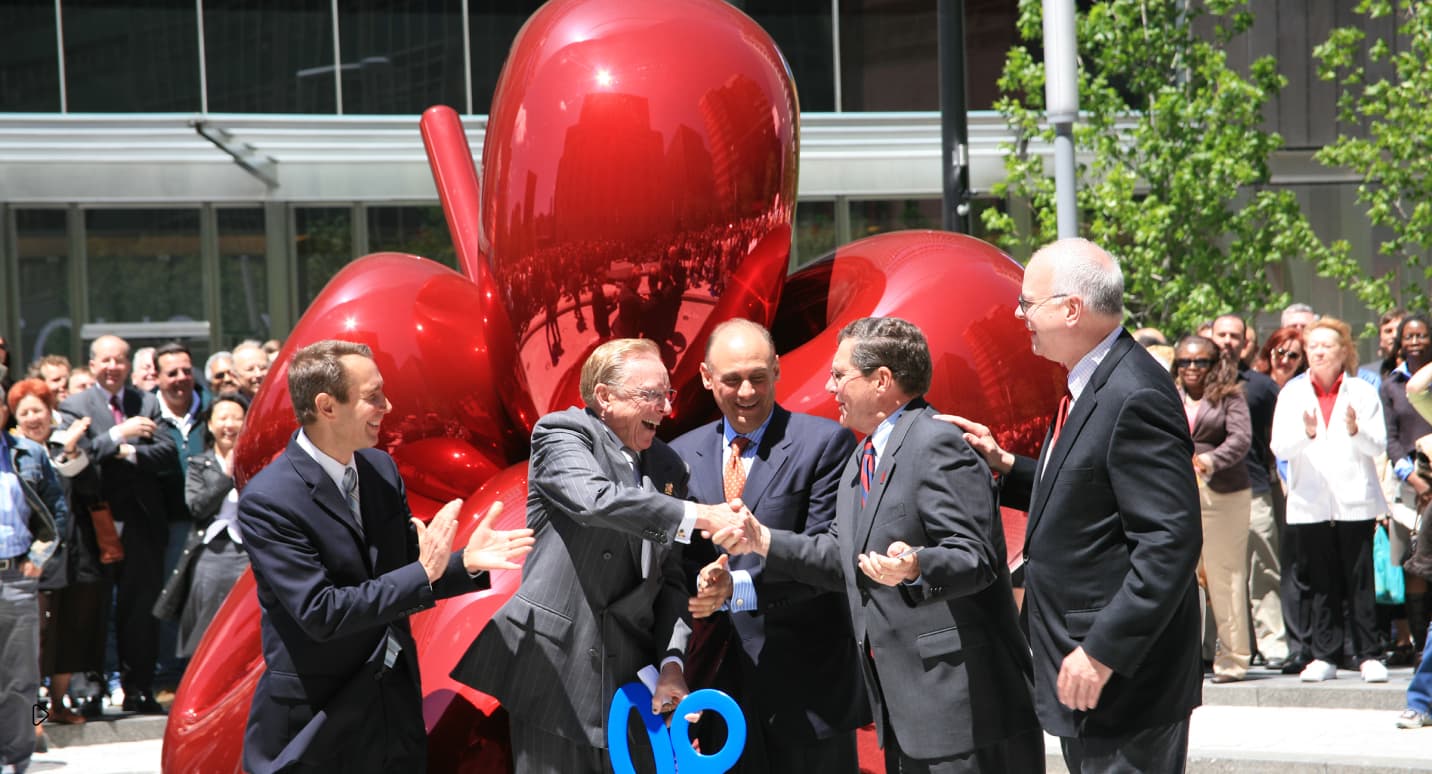
June 29, 2006
David Childs of Skidmore, Owings & Merrill presented the final design for One World Trade Center.
Childs unveiled several final drawings to an audience of 700 engineers and architects at the AIA New York Chapter’s 2006 Design Awards held at 7 World Trade Center. The revised design for One World Trade Center featured a 186-foot-tall podium which was redesigned to be covered by a screen of glass prisms, veiling the concrete base that was originally criticized for being too brutalist.
July 26, 2006
Production of the first steel beam.
Production of the first steel was produced in Luxembourg to create the first 27 “extra-large” steel columns of 1 World Trade Center. Approximately 805 tons of steel was being produced to serve as part of the below-grade structure for the historic tower.
September 7, 2006
Silverstein Properties unveiled designs for Towers 2, 3 and 4.
Silverstein Properties unveiled designs for Towers 2, 3 and 4 by architects Norman Foster, Richard Rogers, and Fumihiko Maki, respectively, along with a complete master plan for the entire east bathtub. For Tower 2, Foster designed a 78-story skyscraper that peaks with a slanted diamond-shaped top, recognizing the memorial below. Rogers’ 71-story Tower 3 featured a slim glass box enclosed in an exterior steel frame of diagonal braces. Maki introduced a 61-story minimalist tower constructed in glass lined with perforated metal, intended to create a unique luster. A fifth office tower on Liberty Street, the Santiago Calatrava-designed WTC Transportation Hub, performing arts center, memorial and museum will complete the vision for the site.
600k
square feet
September 14, 2006
Moody’s Corporation signed a 20-year lease to occupy 15 floors of the 52-story 7 WTC.
At approximately 600,000 square feet on 15 floors, the Moody’s lease is the largest to date at the WTC and the largest lease transaction in Manhattan in 2006.
September 20, 2006
Silverstein Properties team was given the go ahead to proceed with the design and construction of the East Bathtub.
2006 marked the start of heavy foundation construction for the east bathtub, the installation of One World Trade Center’s first steel, and the construction of the memorial’s footings.
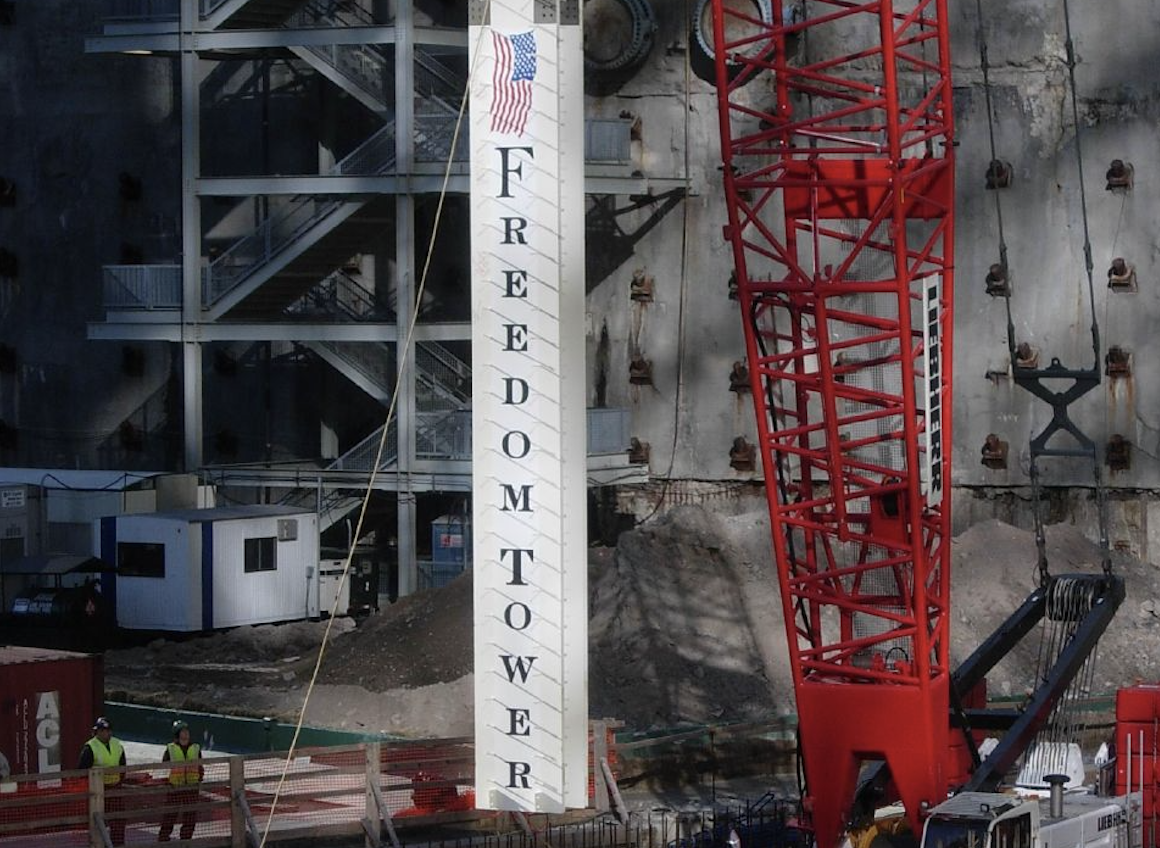
December 19, 2006
Placement of the first steel columns for One World Trade Center.
Governor George E. Pataki, Mayor Michael R. Bloomberg and Port Authority officials gathered to witness the placement of the first steel columns for One World Trade Center.
2007
Long-term sub-net lease with JPMorgan Chase & Co.
The Board of Commissioners authorized the Port Authority to enter into a long-term sub-net lease with JPMorgan Chase & Co. to develop Tower 5 as a 1.3 million-square-foot skyscraper at the World Trade Center site.
September 2007
WTC officials and architects joined Silverstein Properties to unveil final designs and construction plans for Tower 2, 3, and 4.
Refinements to the plan included orienting the office lobbies westward, access to lower-level retail and the WTC Transportation Hub, and earning LEED gold certification. The three Greenwich Street Towers were planned to be models of life safety, cutting edge technology, and examples of environmental efficiency.
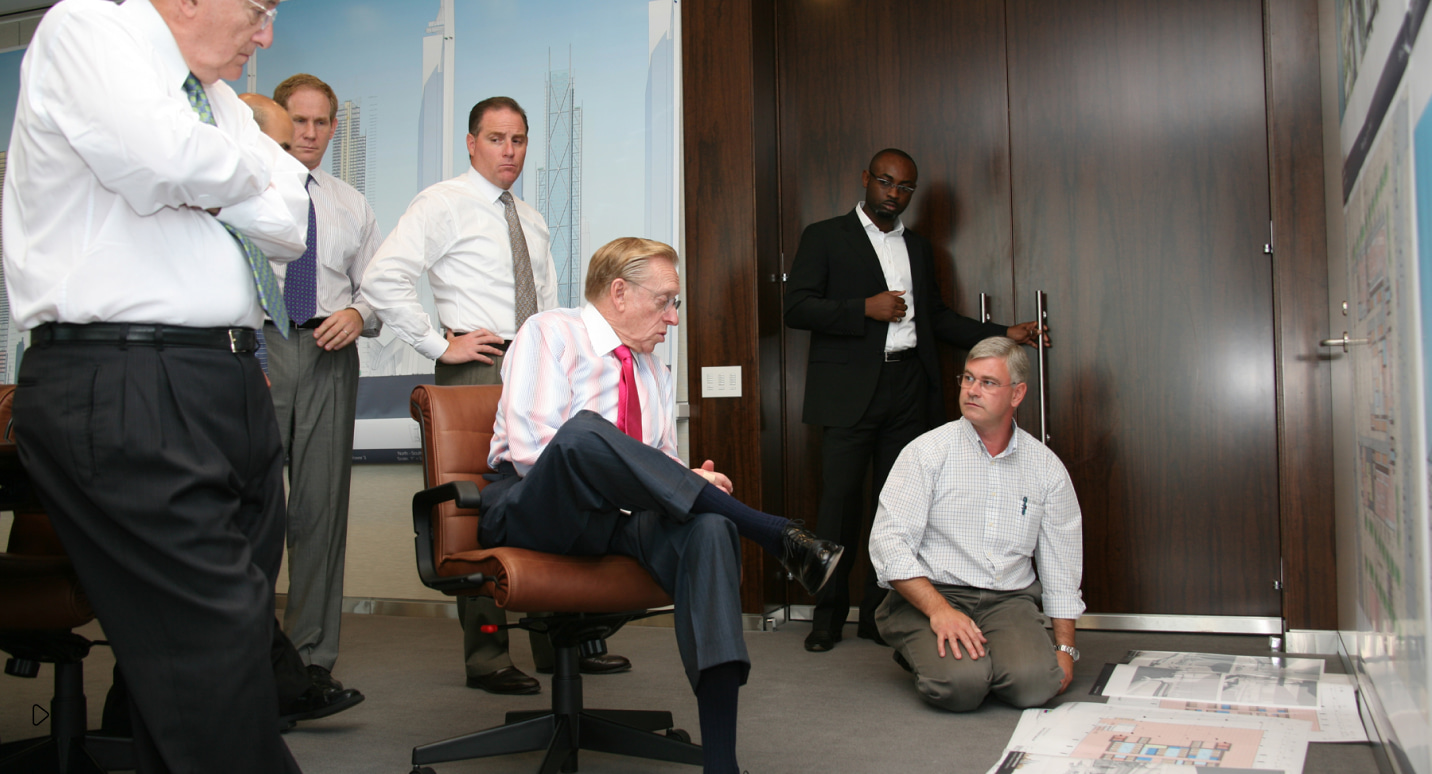
2008
In February, foundation work began for Tower 3 and Tower 4.
The Port Authority began turning over the southern portion of the East Bathtub to Silverstein Properties, allowing foundation work to begin for Tower 3 (175 Greenwich Street) and Tower 4 (150 Greenwich Street).
September 2008
Designs for WTC Towers 2, 3 and 4 were completed.
On May 23, 2006, Larry Silverstein opened 7 World Trade Center, a 52-story, $700 million project, that became New York City’s first LEED-certified “green” office building.
85%
occupancy at 7 WTC
December 04, 2008
West LB leases top three floors at 7 World Trade Center.
Mayor Michael Bloomberg and Larry Silverstein announce that West LB, a leading German financial institute, leased the top three floors of 7 World Trade Center, bringing the building’s total occupancy to 85%.
2009
By February, construction on WTC 4 is well underway.
Tower 4 was designed by Japanese architect Fumihiko Maki. Maki’s minimalist vision for this 64-story tower complements Daniel Libeskind’s master plan, which uses the four WTC towers as an abstract spiral descending towards the National 9/11 Memorial. At 975 feet, Tower 4 is distinctive for its sleek, glass façade and two distinctly shaped floor plates.
March 27, 2009
The Port Authority of New York and New Jersey changed the name of the Freedom Tower to One World Trade Center with the rationale that this would make the building more marketable for tenants and the public.
May 11, 2009
Construction said to be cancelled on Tower 5.
The Port Authority of New York and New Jersey announced that they wanted to cancel construction on Tower 5 altogether to cut the amount of office space available in the reconstructed World Trade Center to 5 million square feet.

Photograph Credit : Bloomberg Philanthropies, CC0, via Wikimedia Commons
May 21, 2009
Mayor Michael Bloomberg invited leaders to discuss the future of the site.
Mayor Michael Bloomberg invited leaders including Assembly Speaker Sheldon Silver, New Jersey Governor Jon Corzine, Governor David Patterson, Silverstein Properties and Port Authority officials to Gracie Mansion to discuss the future of the site and ended with a promise of another meeting. This meeting marked another step forward in the rebuilding process of the WTC.
2009
Mansueto Ventures occupy the 29th floor of 7 World Trade Center.
Mansueto Ventures, publisher of Inc and Fast Company, made their home at 7 WTC after being founded in 2005 and currently occupy the entire 29th floor.

2009
NCR occupies the 35th Floor of 7 WTC.
NCR is a world leader in consumer transaction technologies and with their products and services, more than 23 billion consumer self-service transactions processed globally.

2010
Silverstein Properties, the Port Authority of New York and New Jersey have 45 days to come up with a new development schedule.
On January 26, after a three-month long hearing, an arbitration panel ruled to give the Port Authority of New York and New Jersey and Silverstien Properties 45 days to come up with a new development schedule for the Towers 2, 3 and 4.
July 2010
For the first time, every part of the WTC site has begun construction.
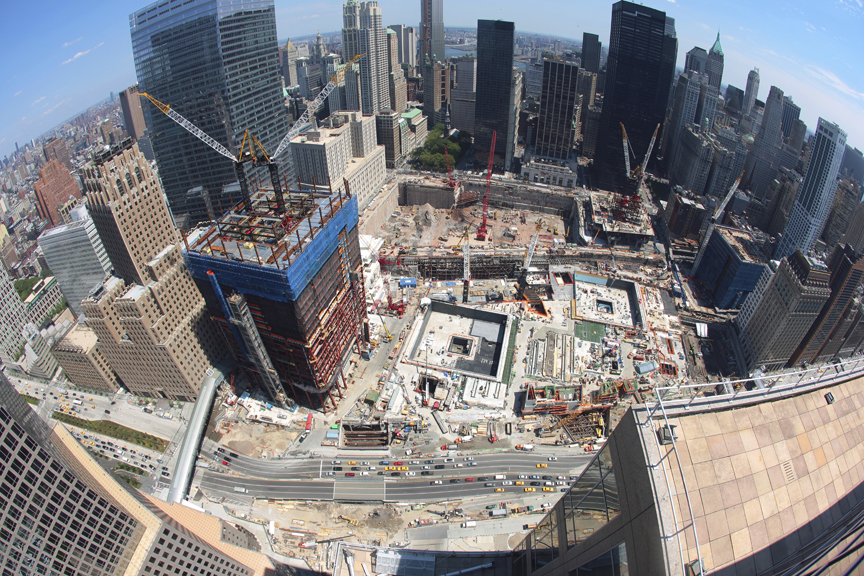
2011
NYC government will lease 14 floors of 4 World Trade Center.
Mayor Bloomberg’s office announces that the New York City government will lease 14 floors of 4 World Trade Center, marking the first tenant lease to be signed on the east side of the World Trade Center site.
April 5, 2011
WilmerHale signs lease at 7 World Trade Center.
On April 5, 2011, Mayor Bloomberg joined William J. Perlstein, WilmerHale co-managing partner, and Larry A. Silverstein at the signing of WilmerHale’s 7 World Trade Center tenant lease, which is the first to incorporate groundbreaking language crafted by industry leaders working with the Mayor’s Office of Long-Term Planning and Sustainability to promote enhanced energy efficiency and sustainability.

May 4, 2011
Steel has risen to the 64th floor of 1 WTC and 23rd floor of 4 WTC.
Silverstein Properties and the Port Authority announced that the steel has risen to the 23rd floor of 4 World Trade Center and that the foundation work for 2 and 3 World Trade Center was complete.
1 million
square feet
May 18, 2011
Condé Nast finalized a $2 billion deal to become the anchor tenant on One World Trade Center
Condé Nast finalized a $2 billion deal with the Port Authority of New York and New Jersey to become the anchor tenant on One World Trade Center. The magazine empire, which will relocate from their headquarters at 4 Times Square to downtown, signed the 25-year lease agreement to occupy up to 1 million square feet.

June 25, 2011
4 WTC is the first building to top out on the main World Trade Center site.
The final steel beam was lifted 977 feet above ground and placed atop the 72 story skyscraper. The ceremony, hosted by Larry Silverstein and local elected officials, celebrated the 2.3 million-square-foot building set to open in Fall of 2013.
August 15, 2011
Memorial Plaza Waterfall lights were illuminated for the first time.
The 9/11 Memorial Plaza opened on September 11, 2011, exactly ten years after the World Trade Center attacks. On August 15, 2011, the lights that illuminate the waterfalls were turned on for the first time.
September 8, 2011
Lower Manhattan shifts into one of the fastest-growing residential areas of New York City.
Contrary to what many believed would happen, Lower Manhattan shifts into one of the fastest-growing residential areas of New York City. Downtown, the southern tip of Manhattan below Canal Street, the population has nearly doubled over the last decade, adding 26,800 residents.
September 11, 2011
10-year Anniversary and for the dedication ceremony for the National September 11 Memorial and Museum.
President Obama, President Bush, Mayor Bloomberg, Larry Silverstein and Port Authority officials gathered with those who lost loved ones in the September 11, 2001 terrorist attacks on the World Trade Center site to mark both the 10 year Anniversary and for the dedication ceremony for the National September 11 Memorial and Museum.
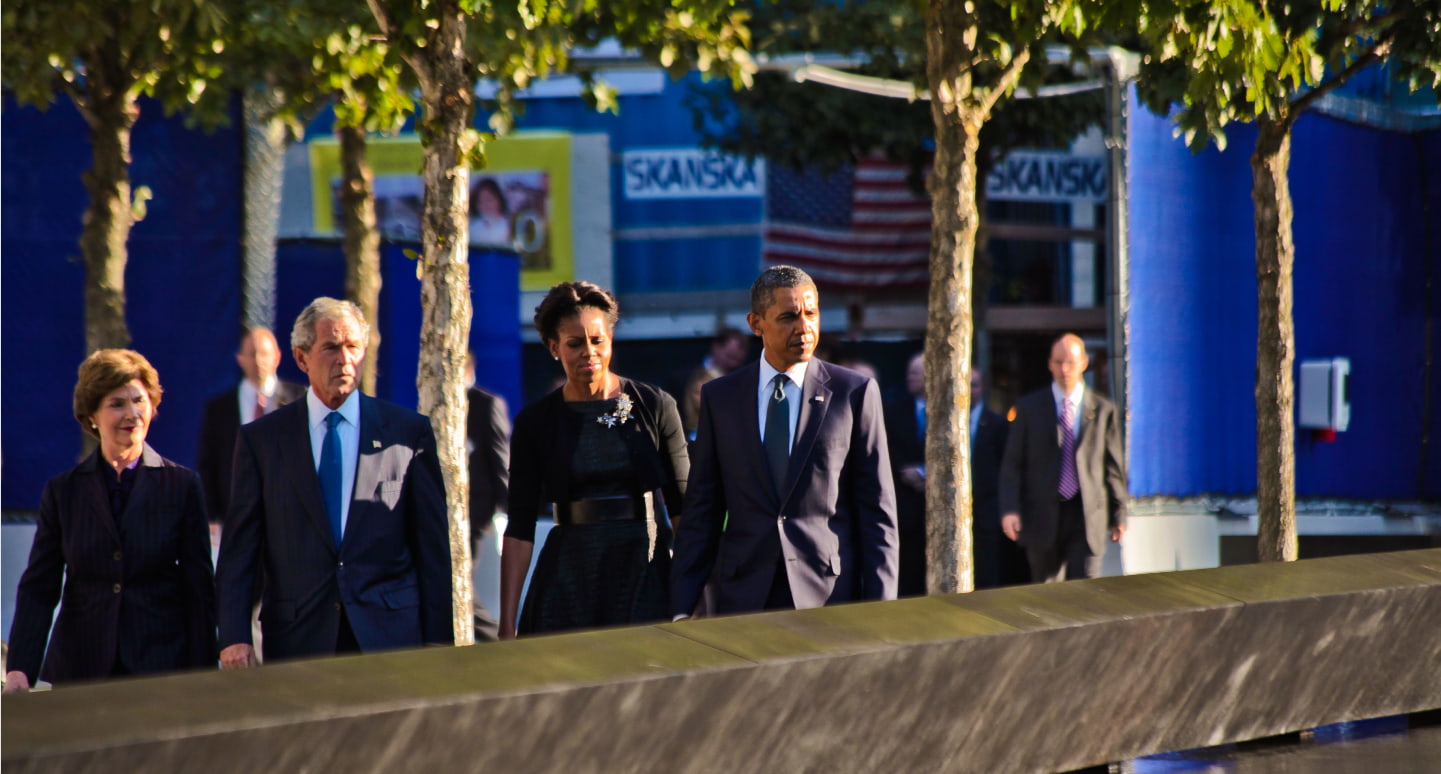
September 19, 2011
MSCI Inc. signed a 20-year, 125,000 square-foot lease at 7 WTC.
Silverstein Properties announces that MSCI Inc. signed a 20-year, 125,000 square-foot lease at 7 World Trade Center, bringing the first World Trade Center building to 100% occupancy. The successful leasing of the 52-story building just North of the World Trade Center site further proved Downtown’s commercial capability and residential resurgence in the decade following September 11, 2001.

100%
Occupancy
October 7, 2011
The New York Human Resources Administration agreed to take 582,000 square-feet on floors 23-35 of 4 World Trade Center.
The agency will be combining its offices from 180 Wall Street, 2 Washington Street and 250 Church Street into the 2.3 million-square-foot tower to become the second government tenant in the building.
November 1, 2011
Developer Larry Silverstein sold $1.23 billion of tax-exempt Liberty revenue bonds from the New York Liberty Development Corporation to help finance the construction of 4 World Trade Center.

Photograph Credit : Link, © 2024 Gerner Kronick + Valcarcel, Architects, DPC
2012
On January 4 the board members for the World Trade Center Performing Arts Center are officially announced.
Mayor Bloomberg chooses Christy Ferer, the Chief Executive Officer and Founder of Vidicom; Community Board 1 Chairperson Julie Menin; Silverstein Properties Chief Executive Office and President, Larry Silverstein; John Zuccotti, co-Chairperson of Brookfield Office Properties; and Zenia Mucha, Vice President of the Walt Disney Company. The P.A.C. board is tasked with fundraising and making collective decisions about the facility’s programming and expenses.
2013
The last spire ascends 1 WTC
On May 2, the last piece of the spire ascends to the top of One World Trade Center. The ironworker crew on top are Kevin Scally (foreman), John Collins (signalman), and connectors Mike O’Reilly, Ryan Gibbs, Tim Conby and James Brady.
August 2013
“Sky Memory” installed at 4 WTC.
“Sky Memory” is a delicate, 98-foot-diameter titanium arc by the sculptor Kozo Nishino, of Kyoto, Japan.
November 13, 2013
4 World Trade Center officially opens
Larry Silverstein and Janno Lieber of Silverstein Properties cut the ceremonial ribbon, along with Mayor Michael Bloomberg, 4 WTC Architect Fumihiko Maki, and other city officials.
2014
The National September 11 Memorial Museum Opens in May.

July 21, 2014
MediaMath to Move to 4 WTC.
Silverstein Properties announced today that global technology company MediaMath has signed a 15-year, 106,000 square foot lease at 4 World Trade Center. The company will consolidate its more than 300 NY-based employees from three Midtown locations into the 44th, 45th, and 46th floors of 4 World Trade Center when it moves into the 72-story tower in early 2015.
2014
Construction of the WTC Transportation hub.
A crane lifts one of the 114 rafters to be installed on the WTC Transportation hub designed by Santiago Calatrava.
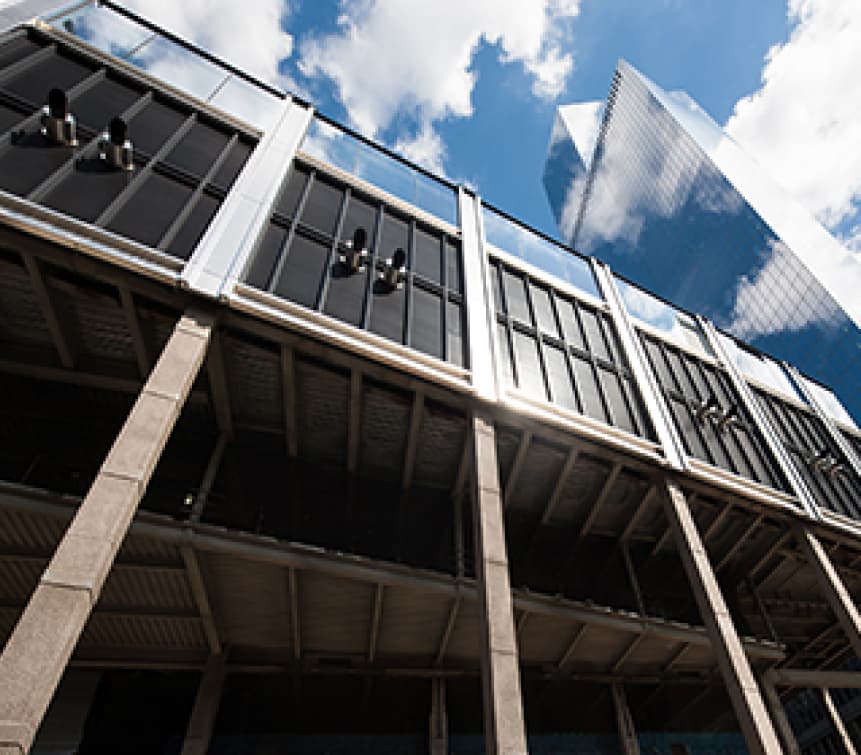
September 8, 2014
Construction Resumes on 3 WTC.
3 WTC in progress from Greenwich St. with the completed 4 WTC in the background blending with the clouds and the sky.
September 18, 2014
Morningstar to Move New York Office to 4 World Trade Center.
September 18, 2014
New East West corridor of the Transportation Hub at the WTC opens.
This passageway links businesses and ferry service to the west of the trade center site to New Jersey-bound PATH trains and the rest of lower Manhattan to the east.
October 21, 2014
Fencing is down at the WTC.
One World Trade Center sidewalks are open to the public for the first time in 13 years.
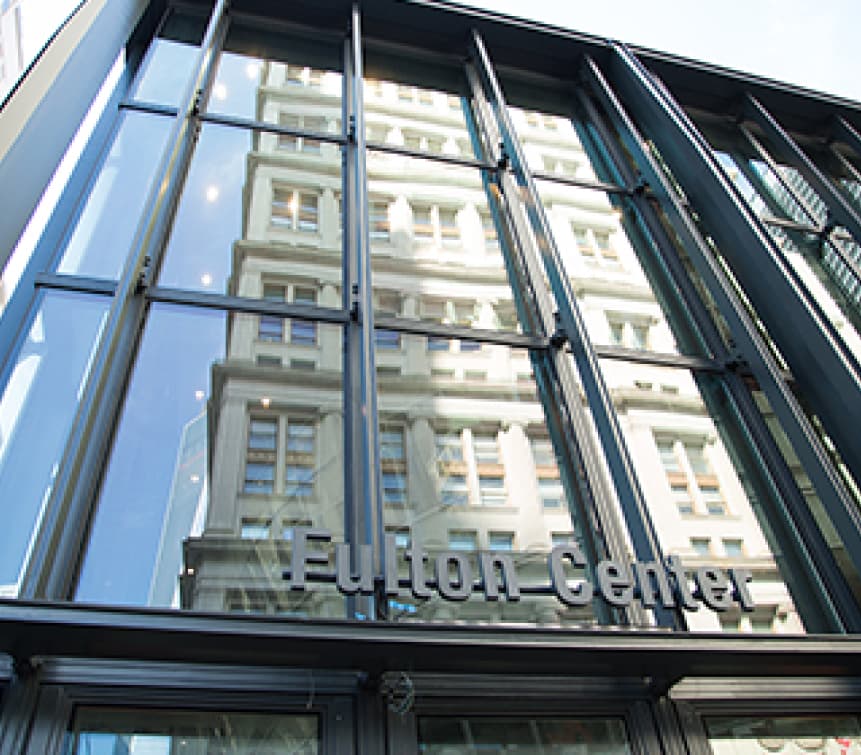
November 10, 2014
The Metropolitan Transportation Authority’s Fulton Center officially opened.
The 65,000 square feet of commercial space at Fulton Center is fully leased, and tenants are expected to include beauty salons, drugstores, and grab-n-go eateries. The MTA anticipates that the shops will open in mid-2015.
November 19, 2014
IEX tech start-up signs to move New York offices to 4 WTC.
Silverstein Properties announced today that IEX, a start-up stock market dedicated to institutionalizing fairness through technology, and the subject of Michael Lewis’ book, Flash Boys, has signed a 7-year, 13,000 square foot lease at 4 WTC.
2015
In February, Nobu leaves Tribeca for WTC.
Nobu, for 20 years one of New York’s most storied and influential restaurants, is leaving its Tribeca home for 195 Broadway — in the heart of the Wall Street/World Trade Center area.
March 10, 2015
New Steel arrives at 3 WTC.
On April 5, 2011, Mayor Bloomberg joined William J. Perlstein, WilmerHale co-managing partner, and Larry A. Silverstein at the signing of WilmerHale’s 7 World Trade Center tenant lease, which is the first to incorporate groundbreaking language crafted by industry leaders working with the Mayor’s Office of Long-Term Planning and Sustainability to promote enhanced energy efficiency and sustainability.
March 2015
Brookfield Place Mall opens.
The new Brookfield Place Shopping Center is open. Brookfield Properties national director of retail leasing Ed Hogan said it will provide a luxury shopping experience in the complex formerly known as the World Financial Center.
May 11, 2015
IEX moves into 4 World Trade Center.
June 2, 2015
Letter of Intent Signed to Occupy 2 World Trade Center.
June 9, 2015
New 2 World Trade Center designs revealed.
2 WTC is the capstone in the redevelopment of the World Trade Center and the final component of the revitalization of Lower Manhattan. The 80+ story building will serve as the new headquarters for 21st Century Fox and News Corp who will occupy the lower half of the tower, housing their subsidiary companies and more than 5,000 people under one roof.
June 2015
Greenwich Street opens between Liberty Street and Vesey Street.
Like eight other intersections, the crossroads was subsumed in 1967 into the 16-acre superblock on which the World Trade Center was built. Since Sept. 11, 2001, its four corners have been occupied by rescue workers, recovery workers or construction workers. The crossroads is to return to public use for the first time since ham-radio and hi-fi buffs swarmed the little appliance and electronics stores of Radio Row…
July 2015
Syntactx signed lease at 4 WTC.
July 2015
Dixon Hughes Goodman LLP signed lease at 4 WTC.
Headquartered in Charlotte, NC, Dixon Hughes Goodman LLP leased 5,023 square feet on the 44th floor for 7 years. The company was previously a tenant at Silver Suites at 7 WTC, along with Syntactx, which leased 6,930 square feet for 7 years, also on the 44th floor.
July 31, 2015
PadillaCRT signs lease on 48th floor at 4 WTC
PadillaCRT signed a 15-year deal yesterday for 14,639 square feet at the Downtown tower at the corner of Liberty Street and Trinity Place, Silverstein announced.
August 2015
Construction Update: 3 WTC Reaches Halfway Point.
“3WTC has just passed the halfway point in its rise. Once completed, the total between the towers will likely exceed 50,000 employees — an anticipated influx that’s already translating into an unprecedented retail boom.” -New York YIMBY
October 2015
Crain’s Fast 50: New York’s Fastest Growing Companies- 2 located at WTC
Two of Crain’s 50 fastest growing companies are 4 WTC tenants: Media Math (13) and Syntactex (12).
October 2015
MediaMath moves into 4WTC.
“The two and a half floors that we’ll occupy in this brand new building will bring a lot of important features to MediaMath’s Global Headquarters— state of the art office systems, proximity to top publishers and advertisers, enough conference rooms to actually accommodate our team, dedicated classroom space, and some fun features like yoga rooms, communal areas and breathtaking views.”
365k
square feet
October 2015
Westfield World Trade Center fully leased.
Now fully leased, Westfield World Trade Center’s 365,000 square feet of retail space is equal to nine full city blocks. An additional 90,000 square feet will come online when Tower 2 opens.
November 2015
SNY signs a lease at 4WTC
Silverstein Properties announced today that it has signed a 17-year lease with SNY for 83,000 square feet of office and studio space at 4 WTC.
November 2015
Architectural firm REX to design Performing Arts Center at WTC.
PACWTC Chairman John Zuccotti and President/Director Maggie Boepple today announced the selection of the Brooklyn-based firm REX as the lead architect for The Performing Arts Center at the World Trade Center. Scheduled to open in 2019, PACWTC will serve as a major new addition to New York’s cultural landscape, producing and premiering works of theater, dance, music, musical theater, opera, and film, as well as productions that cross multiple disciplines.
2016
In January, 3 WTC reaches 67 floors.
The Silverstein Properties-developed building will stand 80 stories tall when finished and features 2.8 million square feet of space.
January 2016
GroupM will expand an additional 170,000 square feet at 3 WTC, the tower being constructed by Silverstein Properties
January 2016
21st Century Fox and News Corp decide not to move downtown.
“Make no mistake: it won’t be long before we find a great company to anchor 2 World Trade Center. Lower Manhattan has firmly established itself as the neighborhood of choice for the world’s most dynamic technology, advertising, media, financial and other creative businesses. Downtown’s momentum is palpable and unstoppable – more than 600 firms have moved to Downtown since 2005, leasing over 15 million square feet of space.” Larry Silverstein, Chairman, Silverstein Properties Inc.
March 2016
World Trade Center Transportation Hub officially opens.
The World Trade Center Transportation Hub is the Port Authority of New York and New Jersey’s formal name for the new PATH station and the associated transit and retail complex that opened on March 3, 2016.
May 17, 2016
Morningstar Inc. moves into 4 WTC
Morningstar Inc. has officially moved its credit-rating subsidiary into 4 WTC.
May 27, 2016
New York Commuters can now walk underground from Fulton Street to World Trade Center Transportation Hub.
June 1, 2016
HRT inks deal for 2 floors (69,000 square feet) at 4 WTC.
Hudson River Trading, which uses mathematical and statistical techniques to develop trading algorithms, has signed a 69,000-square-foot lease for the 57th and 58th f loors of the 2.3-million-square-foot tower, according to a press release from the landlord.
June 23, 2016
Topping Out Ceremony at 3 World Trade Center.
The final concrete bucket, which was adorned with the same American flag that was used at the topping out of 7 and 4 WTC, was signed by Larry Silverstein, construction workers, and the assembled New York dignitaries. It was then raised 1,079 feet in the air and placed at the top of the 80-story tower.
June 29, 2016
World Trade Center’s one-acre Liberty Park opens to the public.
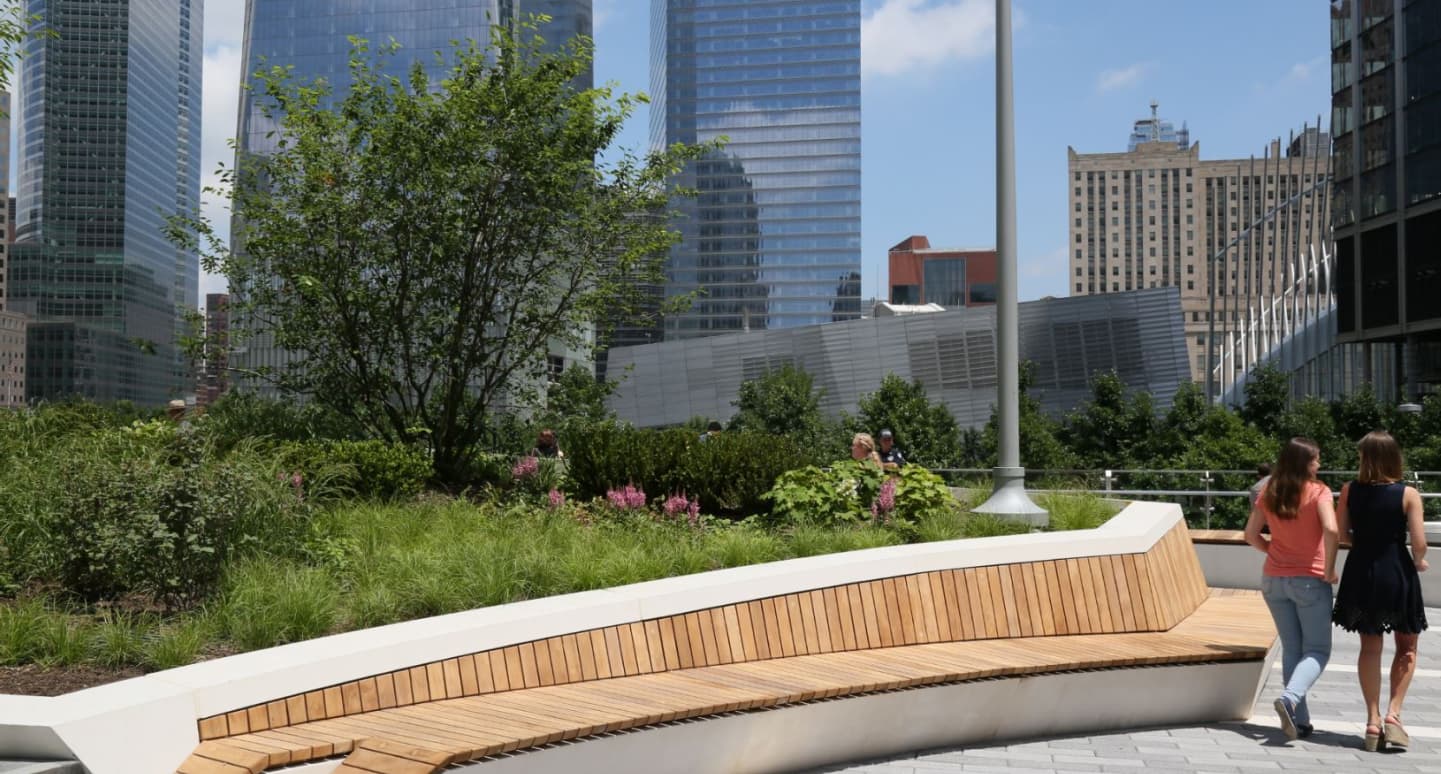
August 2, 2016
Zurich signs 16-year lease for 3 floors/132,000 square feet at 4 WTC.
Silverstein Properties Chairman Larry Silverstein announced today that the company has signed a 16-year lease with Zurich American Insurance Company, the leading multi-line insurance provider, for 132,000 square feet of office space at 4 WTC.
August 2016
Validus making a move to 4 WTC
Validus, a Bermuda-based insurance firm, has signed a deal to relocate its Big Apple operations to 4 WTC from within Downtown. The company has signed a 16-year lease for 24,489 square feet.

August 11, 2016
Eataly opens a second NYC location at 4 WTC.
Eataly opens a 48,000 square foot food emporium on the 3rd floor at 4 World Trade Center
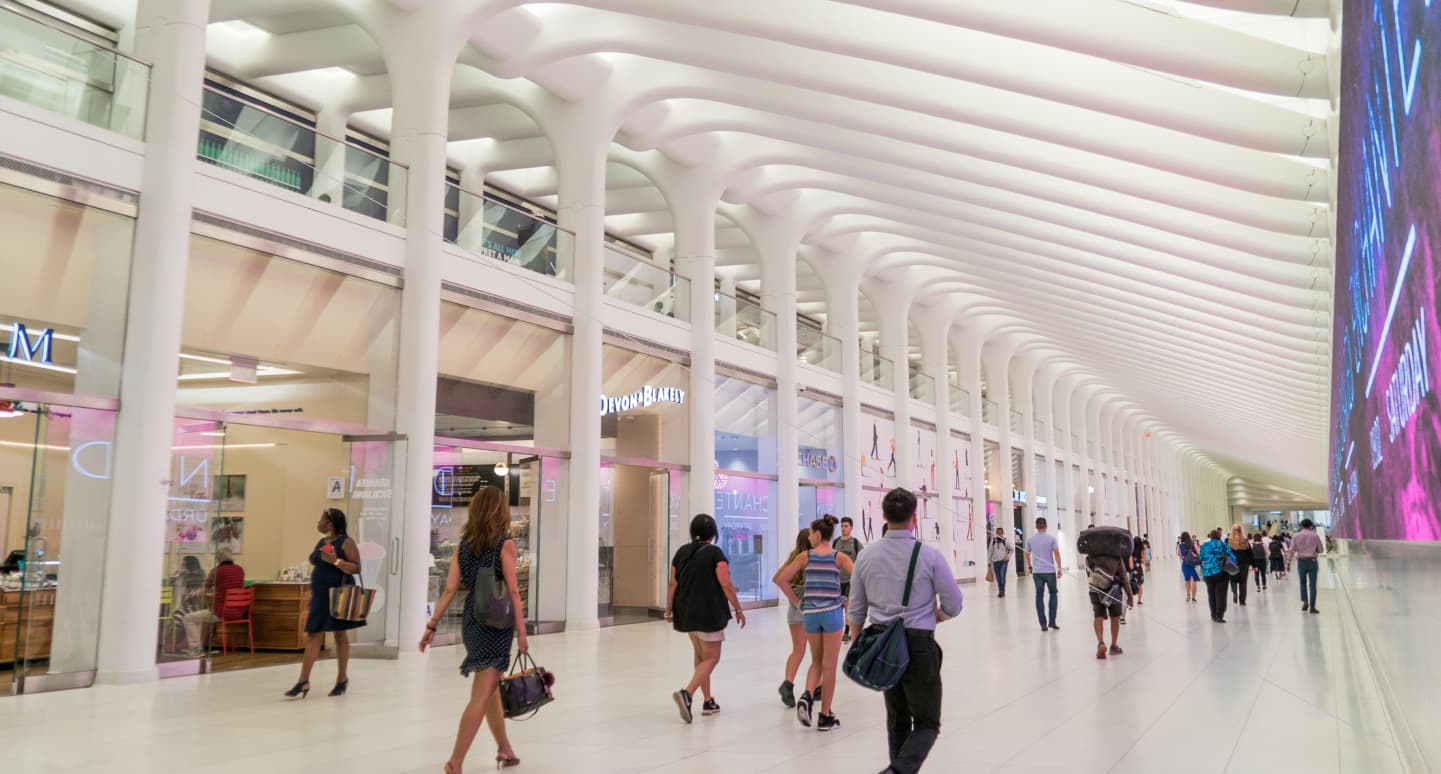
August 2016
Global Atlantic Financial Group has signed a deal for the whole 51st floor of the 2.3-million-square-foot 4 World Trade Center.
September 8, 2016
The official design for the Perelman Performing Arts Center is unveiled.
Scheduled to open in 2020, the Ronald O. Perelman Performing Arts Center will serve as a vital cultural hub bringing three flexible performance venues and community programming to Lower Manhattan.
October 6, 2016
Steel topping out of 3 WTC.
Larry Silverstein celebrates the steel topping out of 3 WTC with 500 union construction workers.
November 2016
Third annual Billie Jean King Leadership Initiative.
Legendary sports icon and human rights advocate, Billie Jean King gathered leaders across sectors to elevate the conversation on inclusive leadership at the third annual Billie Jean King Leadership Initiative at the WTC events space.
December 2016
3 WTC Steel tops out.
December 2016
Installation of the rooftop chillers atop 3 World Trade Center.
Cooling towers are now installed on the roof of 3 World Trade Center.
2017
Brandon Maxwell Fall/Winter Fashion Show.
Brandon Maxwell (who styled Lady Gaga at the Superbowl) displayed his Fall/Winter collection at an exclusive fashion show at the World Trade Center. The show took place on the 71st floor of 4 WTC and featured Bella Hadid, Joan Smalls, and Jourdan Dunn.

February 16, 2017
Spotify signs lease to move HQ to 4 WTC
Spotify signs lease to move their headquarters to the World Trade Center! The global digital music and video streaming service has leased floors 62-72 at 4 WTC.
March 3, 2017
SNY moves in to 4 WTC.
The TV home of the Mets, Jets and all things New York sports, has moved in and will begin broadcasting from a new set of studios at 4 WTC.
September 2017
3 WTC is now fully enclosed with a curtain wall.
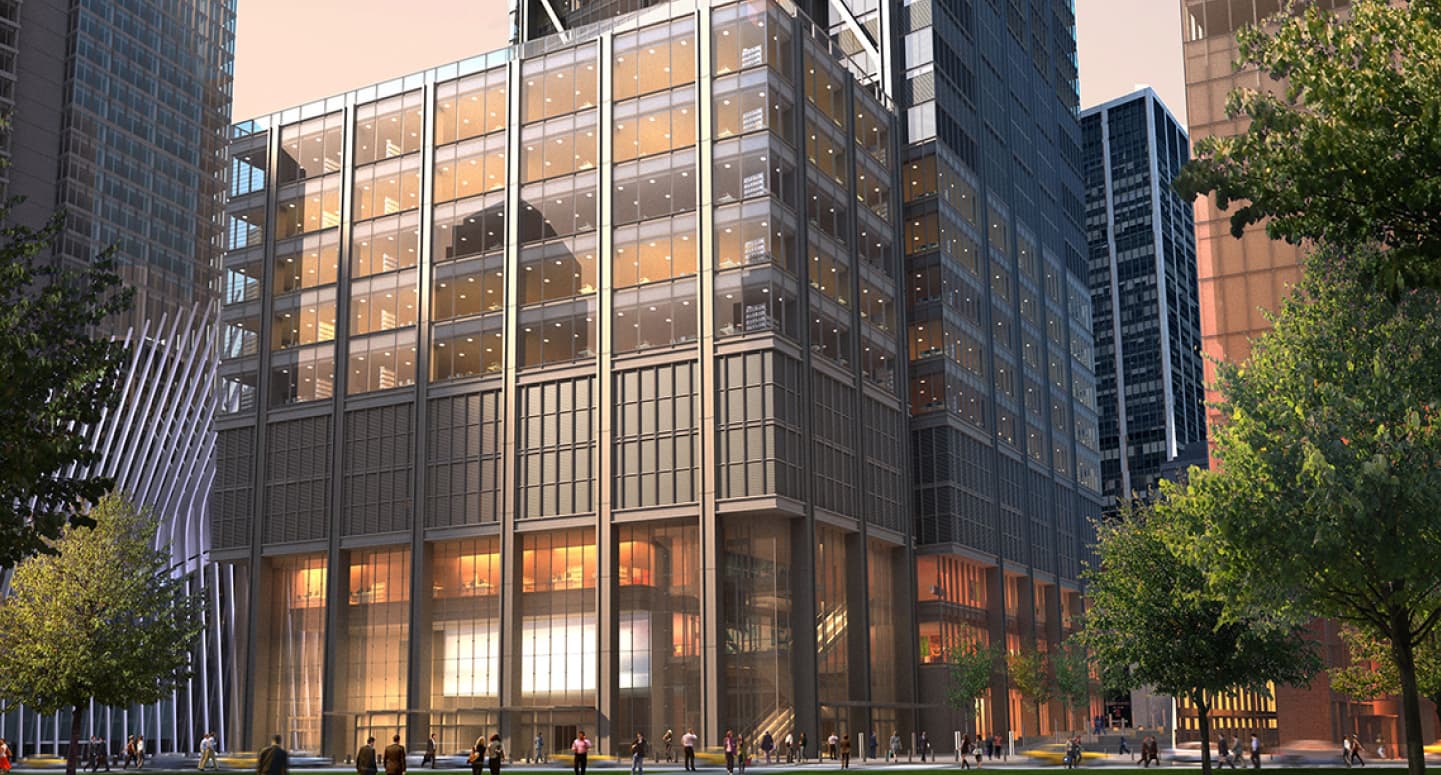
2018
3 WTC Temporary Certificate of Occupancy and Tenants Move-In (tenants include GroupM, Diageo, Uber, McKinsey, HRT)





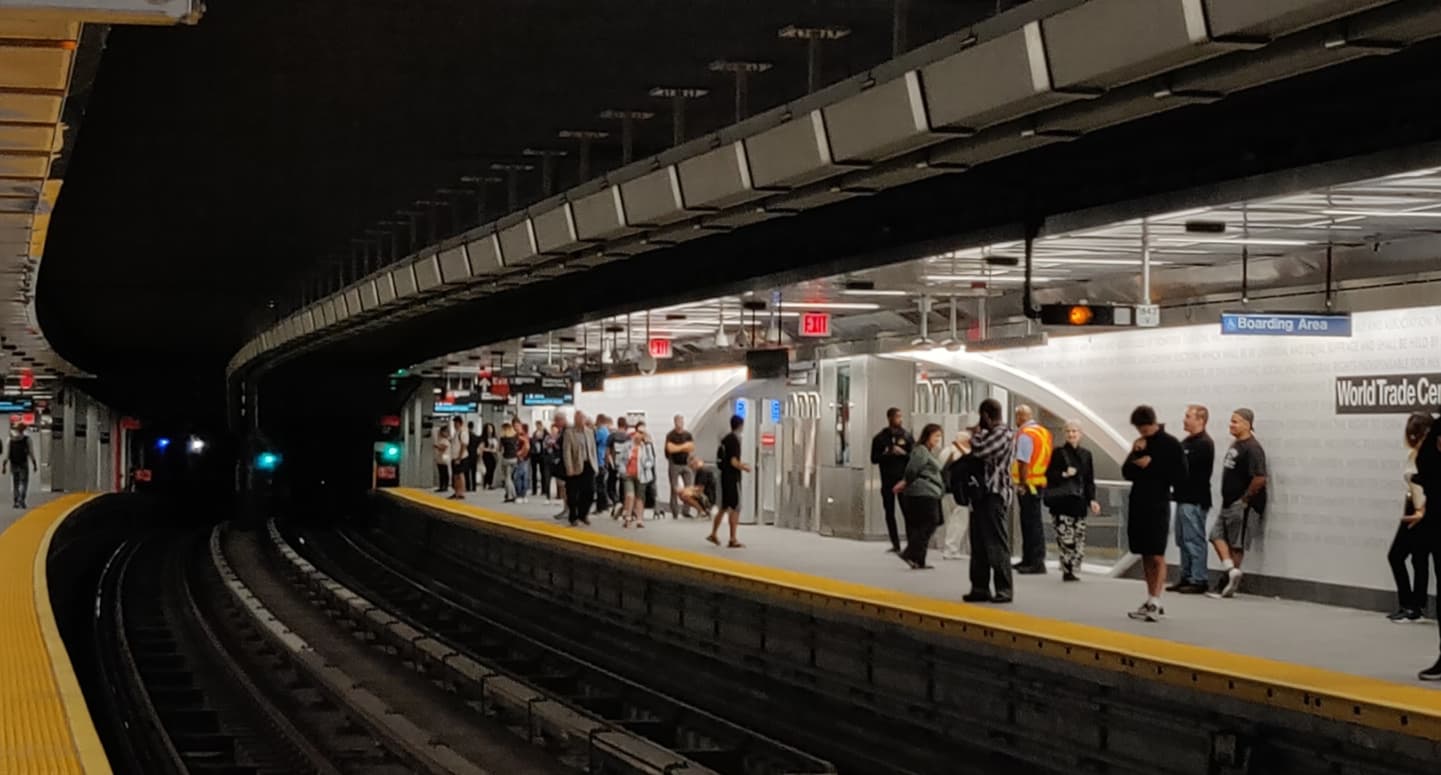
2019
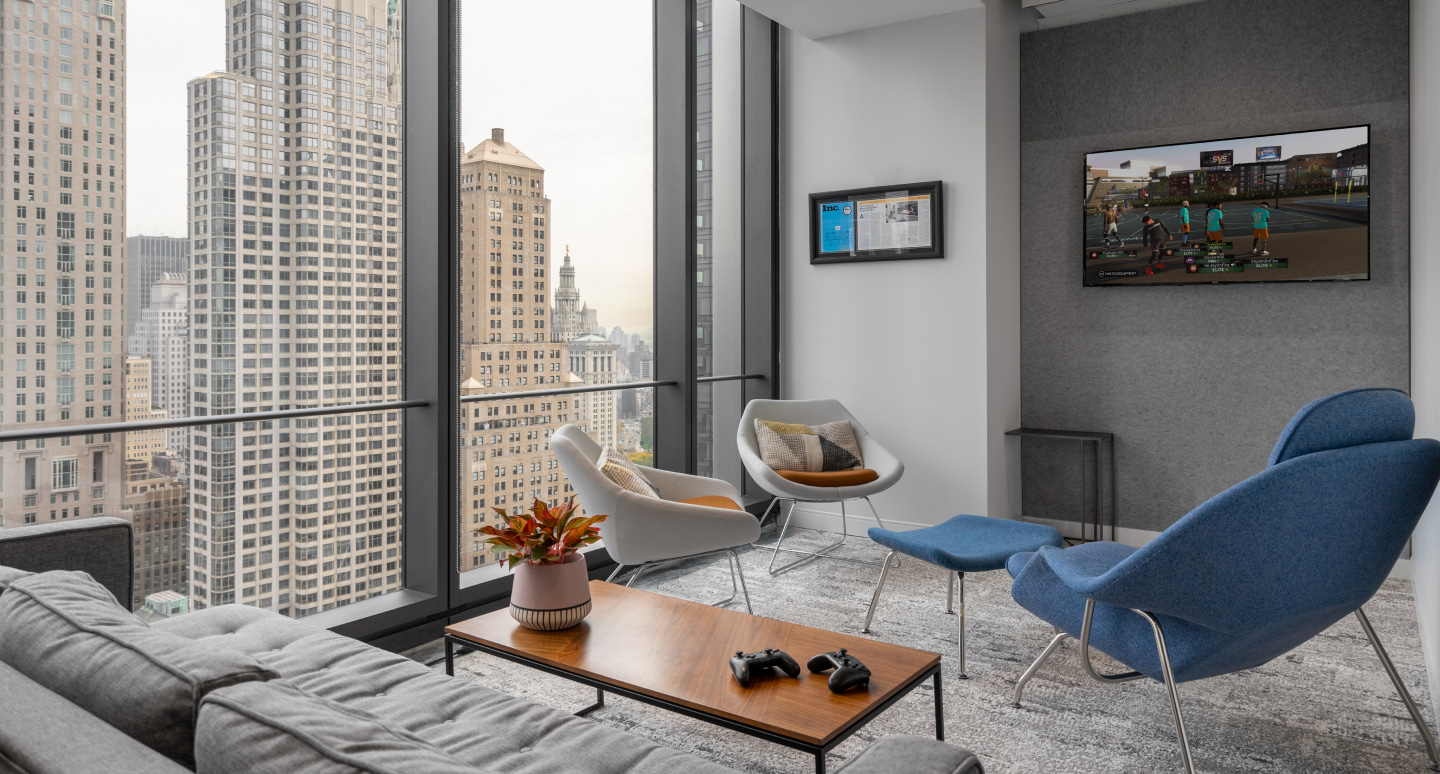
44K
square feet
May 6, 2019
Architecture firm SOM leased 80,000 SF at 7 WTC.
The new space will be the New York home to the firm’s dynamic and sophisticated US team and support the firm’s continued expansion in the US.
August 2, 2019
Silverstein Properties unveils the city’s largest office terrace at 3WTC.

September 10, 2019
Artist Jenny Holzer updated 7 WTC art installation with NYC children’s poems.
300K
square feet
October 23, 2019
Uber Signs at 3 WTC for Space Topping 300K SF.
Ride-sharing giant Uber nailed down its lease for more than 300,000 square feet at 3 WTC.

December 9, 2019
Nationally ranked law firm Cozen O’Connor signed 77,000-square-foot lease at 3 WTC
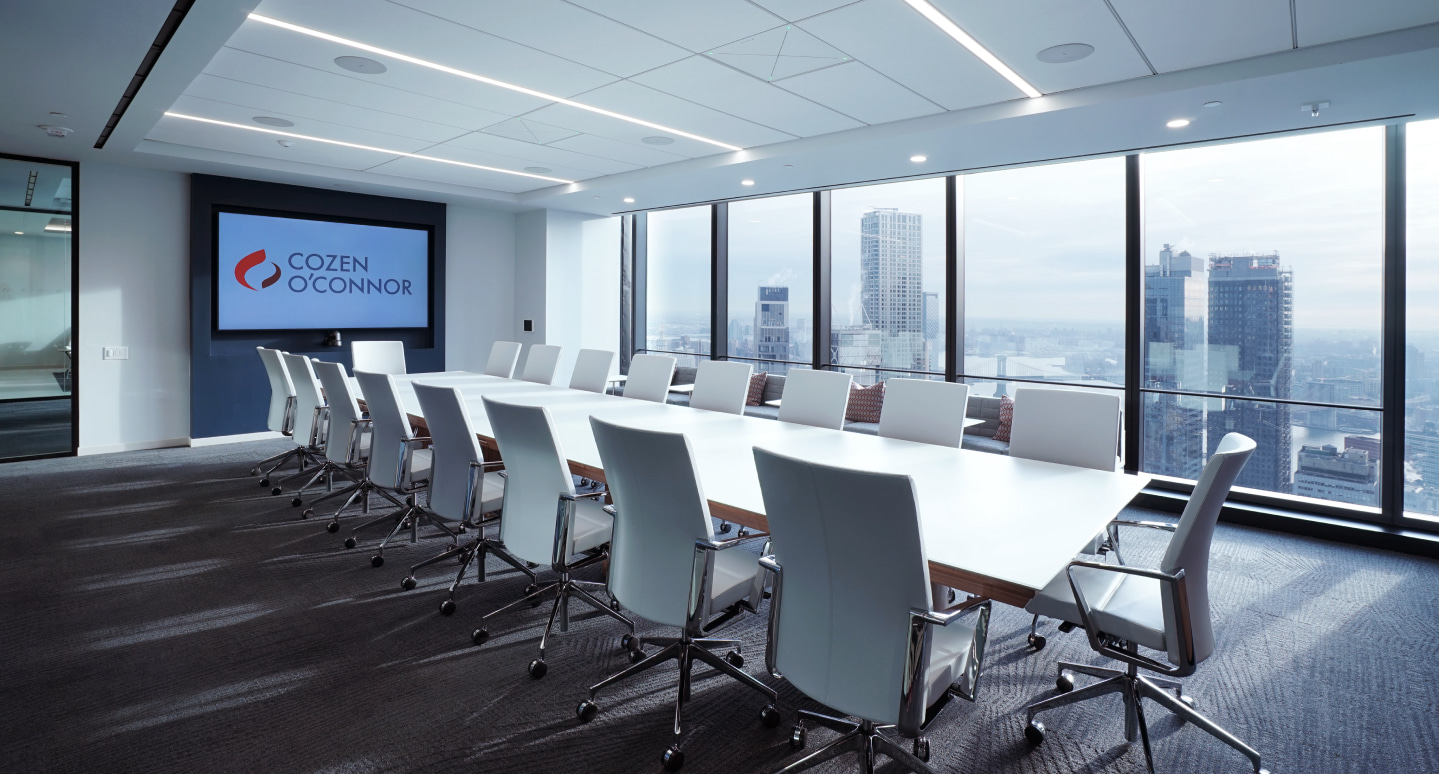
2020
WTC buildings closed due to COVID-19 outbreak
The Alliance for Downtown New York launched the Small Business Rental Assistance Grant program to offer immediate help to storefront businesses currently providing vital services to residents and essential workers in Lower Manhattan during the COVID-19 pandemic.
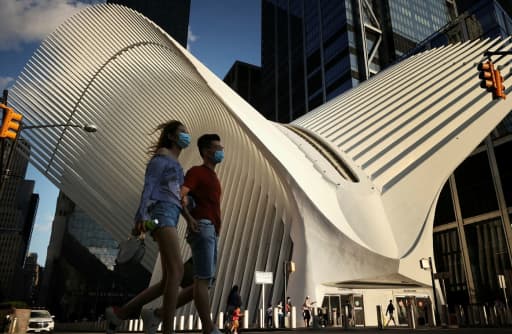
Photograph Credit : Getty Images
2021
Silverstein and Brookfield Properties selected to develop 5 WTC.
In February, the Port Authority and LMDC selected Silverstein and Brookfield Properties to develop 5 WTC as a residential tower.
June 23, 2021
Performing Arts Center topping out.
June 29, 2021
SiriusXM to launched special series highlighting the historic rebuilding of the new World Trade Center.
“Top of the World” will premiered July 6 on Business Radio channel 132, as the 11-part weekly series moved towards the 20th anniversary of 9/11.
September 13, 2021
Performing Arts Center under construction.
November 22, 2021
7 World Trade Center welcomed New Public Art
After 20 Years, Frank Stella returned to ground zero for the installation of his sculpture marks a homecoming for the 85-year-old artist, whose diptych at the World Trade Center was destroyed on 9/11.
December 14, 2021
Hudson River Trading expands at 3 WTC
Hudson River Trading (HRT), a pioneer in the fintech industry, signed a 75,207 square-foot office expansion for the 72nd and 73rd floors of 3 WTC.
2022
Silverstein Properties introduced the employee badge in Apple Wallet for its WTC employees and tenants
Silverstein’s employee badges in Apple Wallet allow users to easily access its office buildings, tenant floors, fitness centers and amenity spaces using their iPhone or Apple Watch.
Photograph Credit : Link
August 24, 2022
Freshfields signed new 15-year lease for 3 WTC.
The new space will be the New York home to the firm’s dynamic and sophisticated US team and support the firm’s continued expansion in the US.
July 2023
NYS reached deal to build affordable at 5 WTC
The Public Authorities Control Board approved 5 World Trade Center, a major, mixed-use development in Lower Manhattan that will include approximately 1,200 units of housing — one-third of which will be permanently affordable and a portion of which will be offered for New Yorkers impacted by 9/11.
Today
The 50th anniversary of Philippe Petite’s wire walk
“People think in old age you cannot do anything anymore,” he tells the Times. “I think it’s the opposite. I think I’m more majestic, more in control, more beautiful to look at today at 74 than I was at 18.”
Photograph Credit : AP Photo/Alan Welner
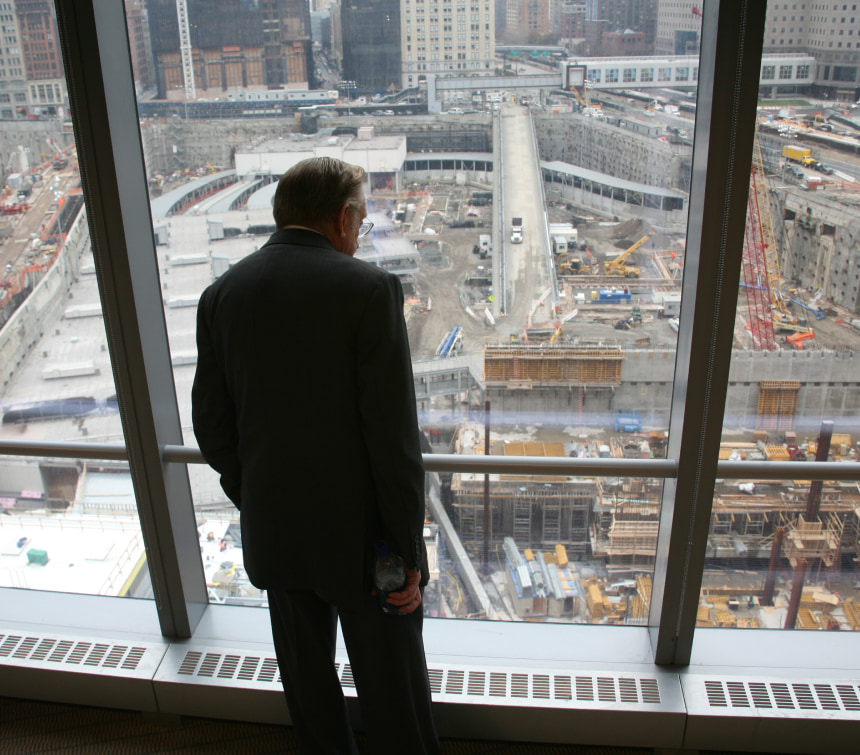
September 2024
Larry Silverstein publishes WTC memoir
Larry Silverstein releases a new book, “The Rising: The Twenty-Year Battle to Rebuild the World Trade Center” published by Alfred A. Knopf. It’s the never-before-told story of the rebuilding of the World Trade Center—an epic blend of business, politics, real estate and engineering, written by the man who dedicated two decades toward making it happen.
